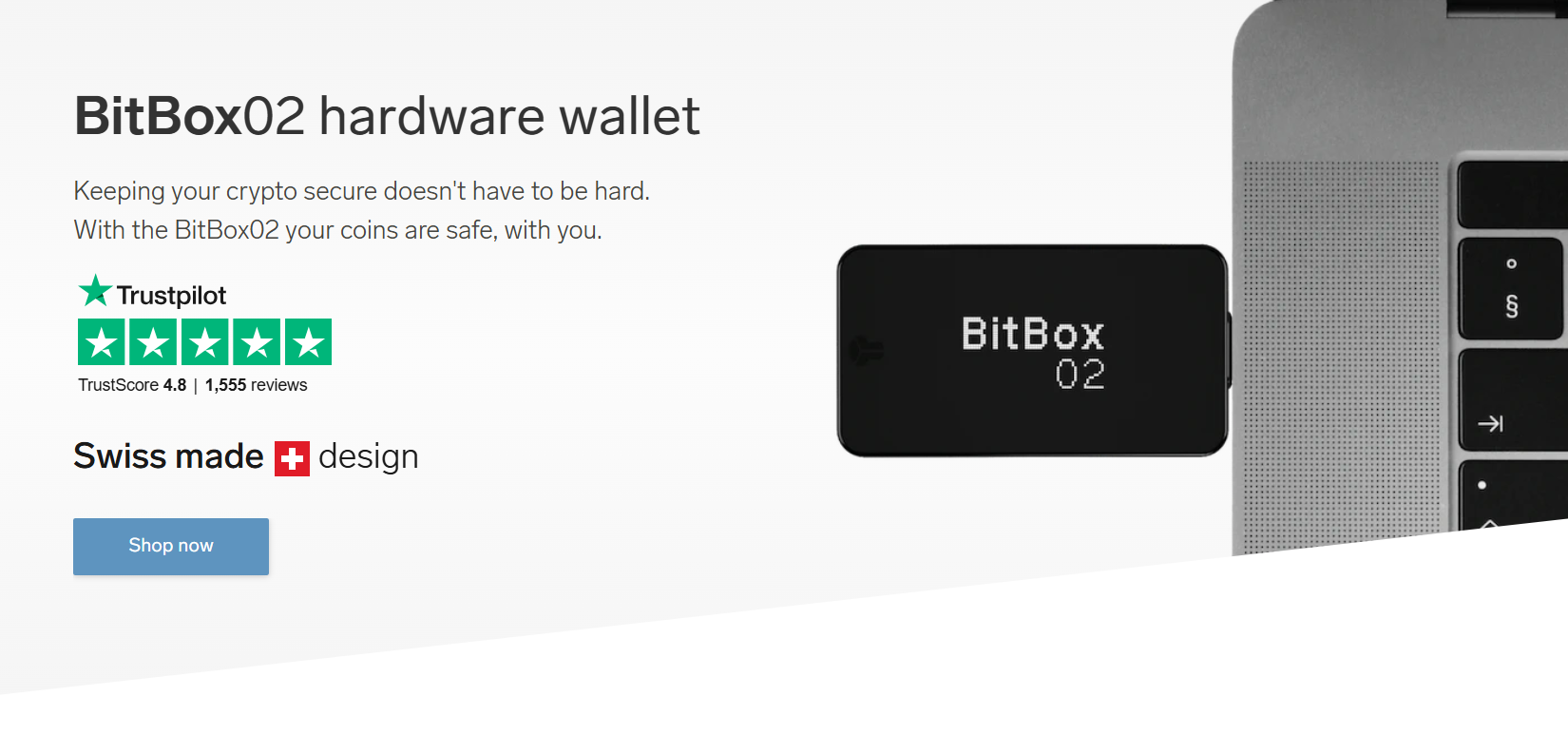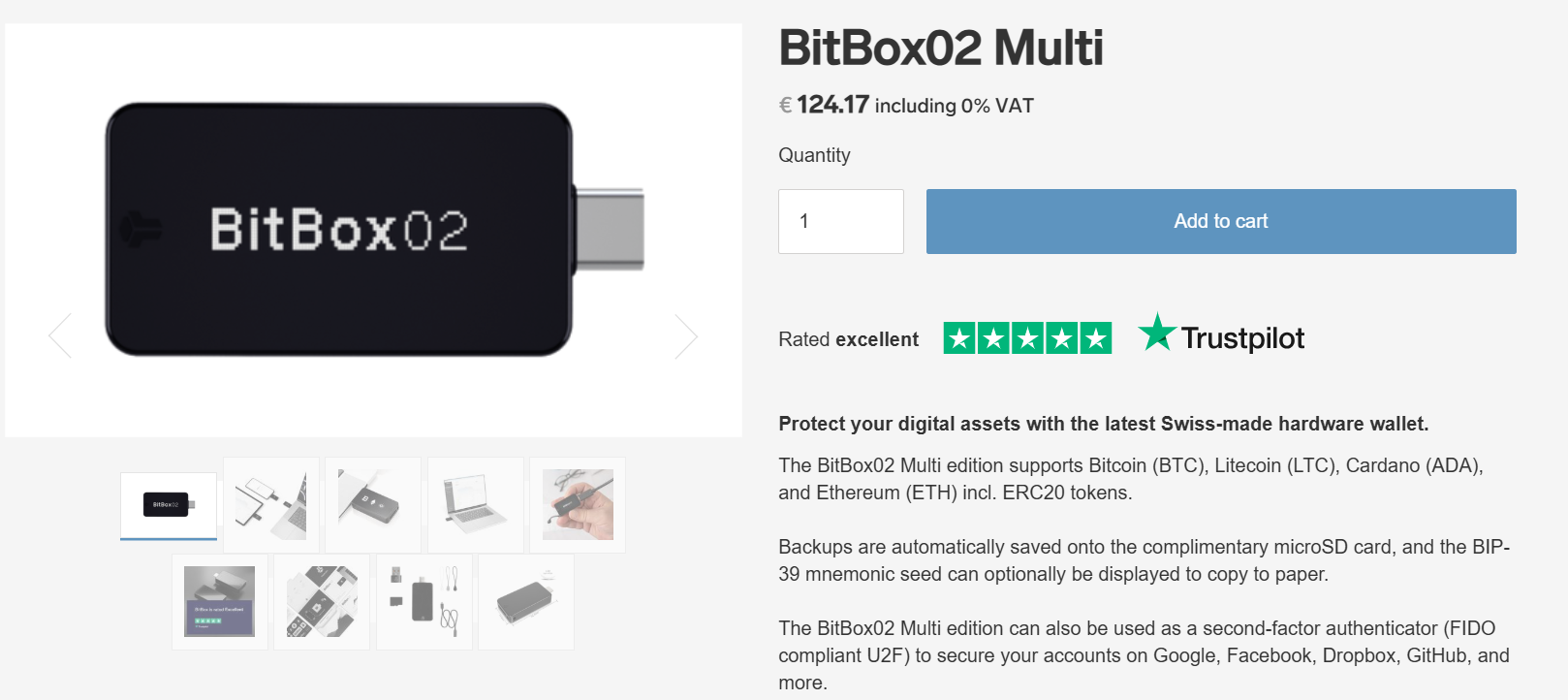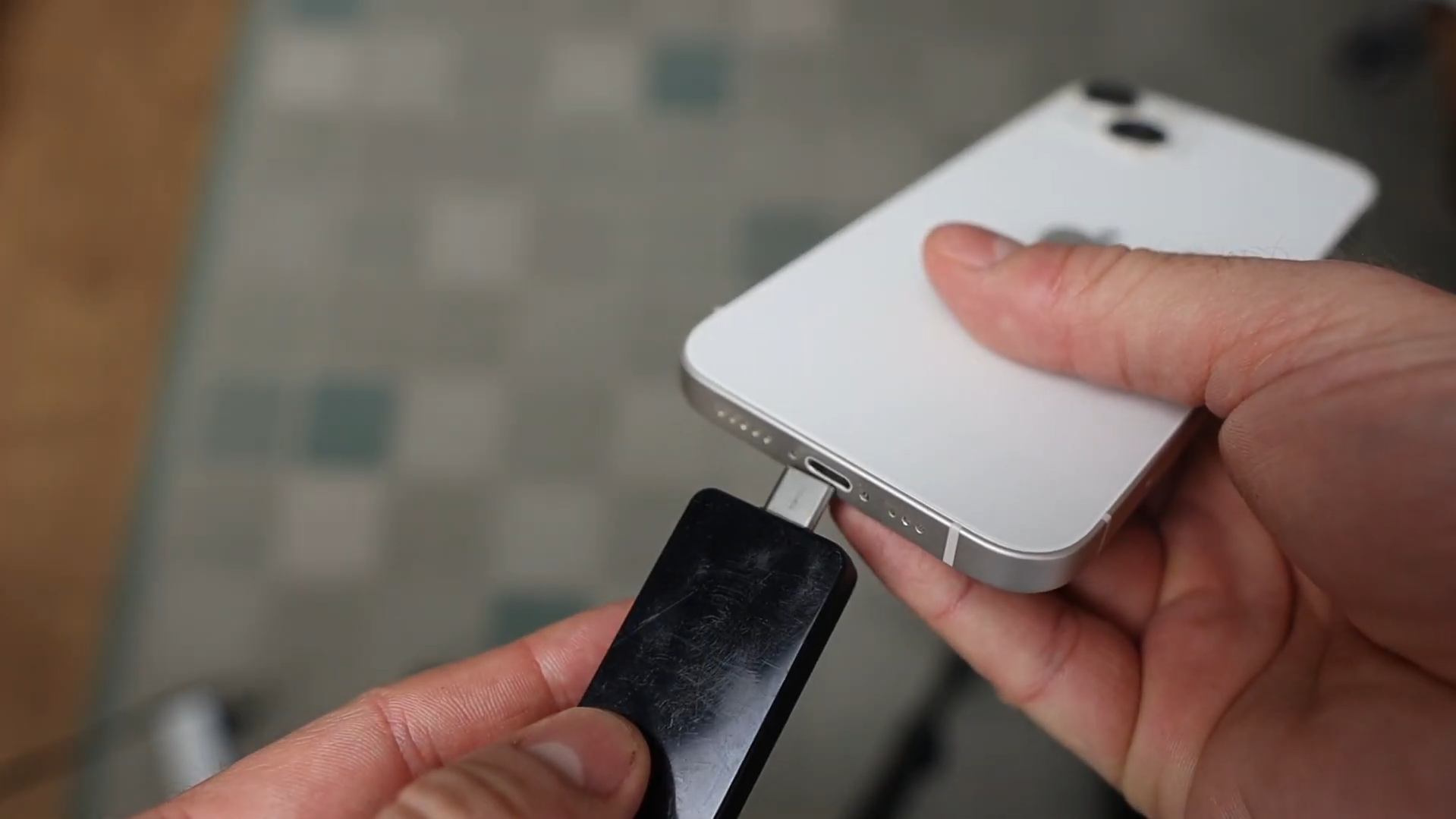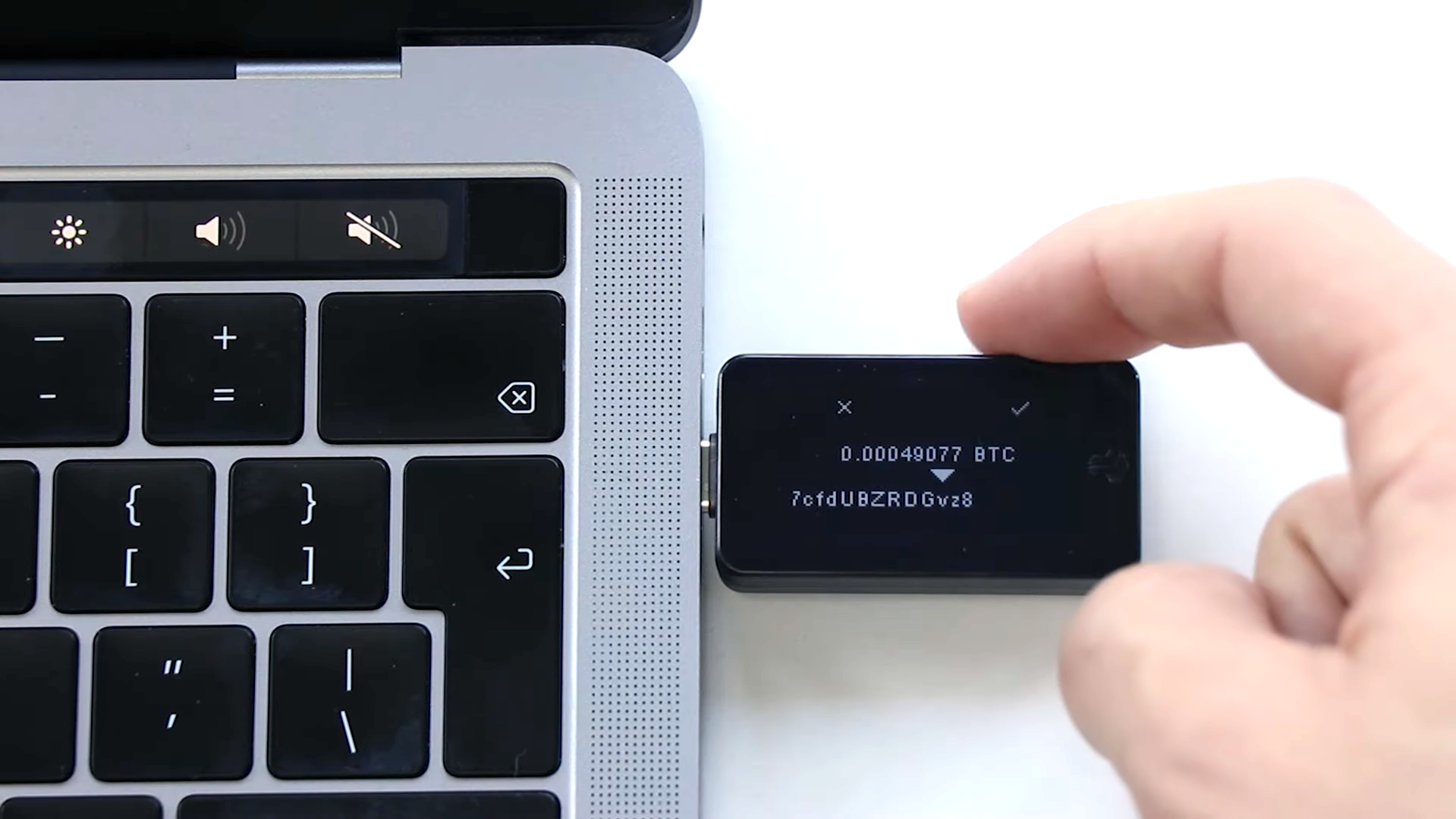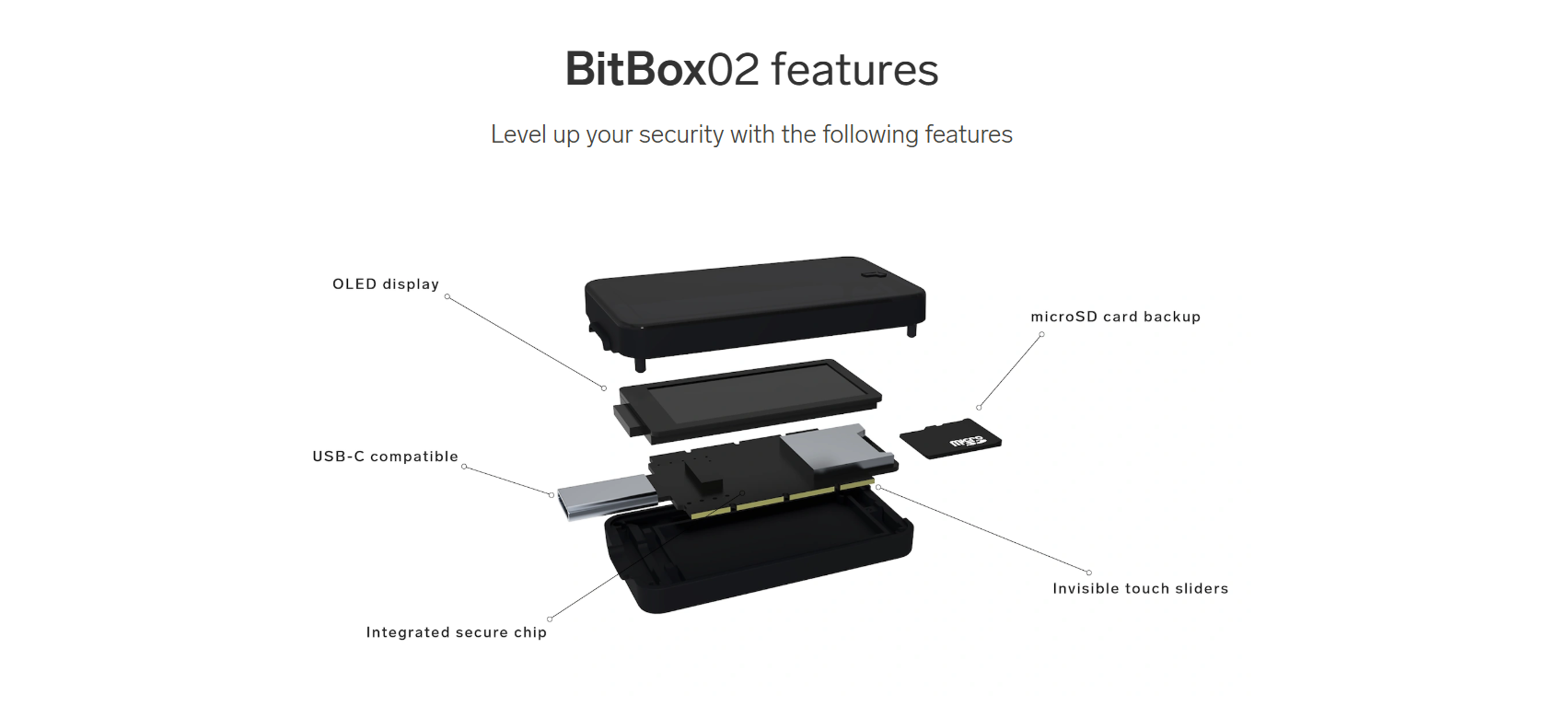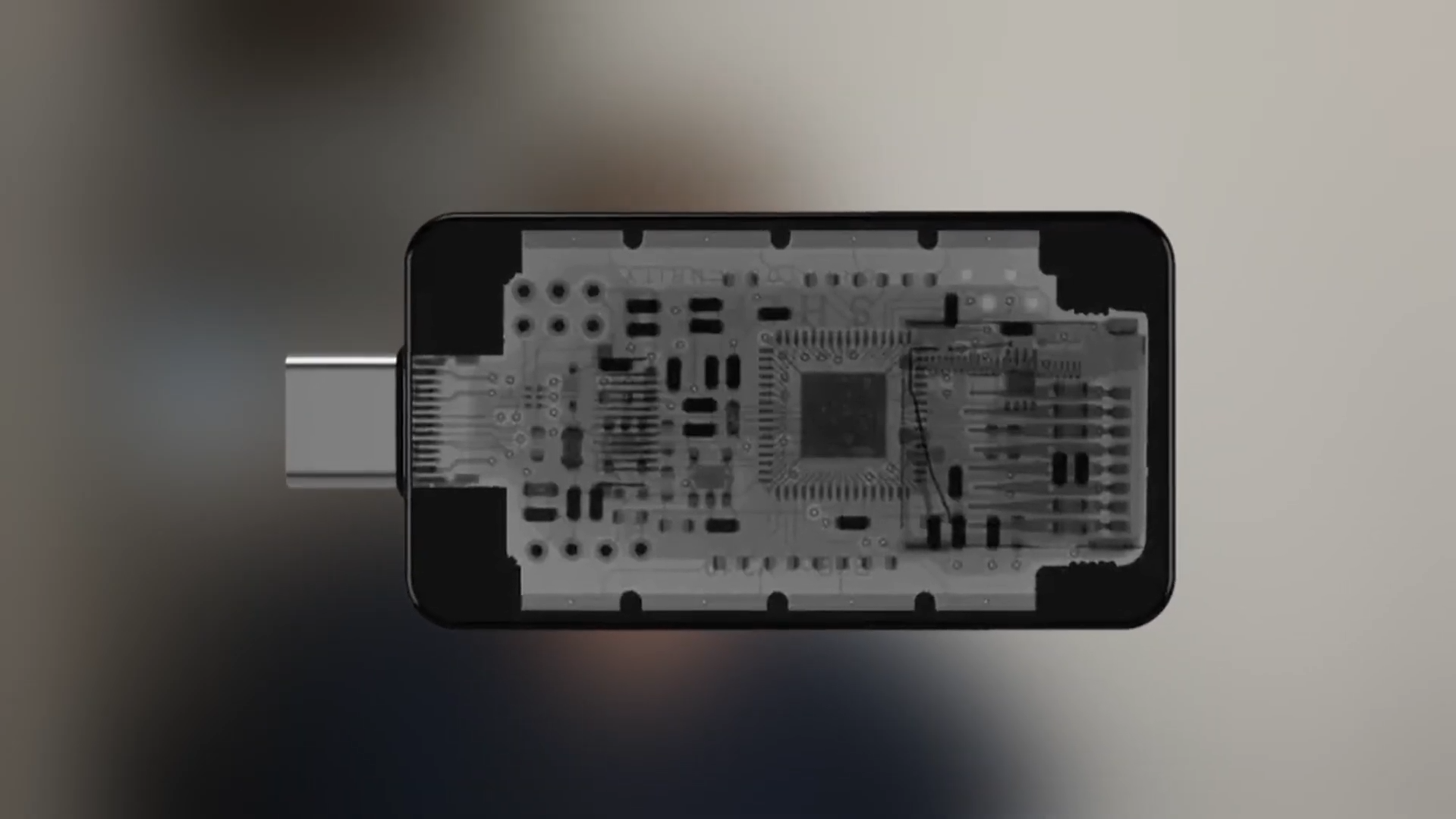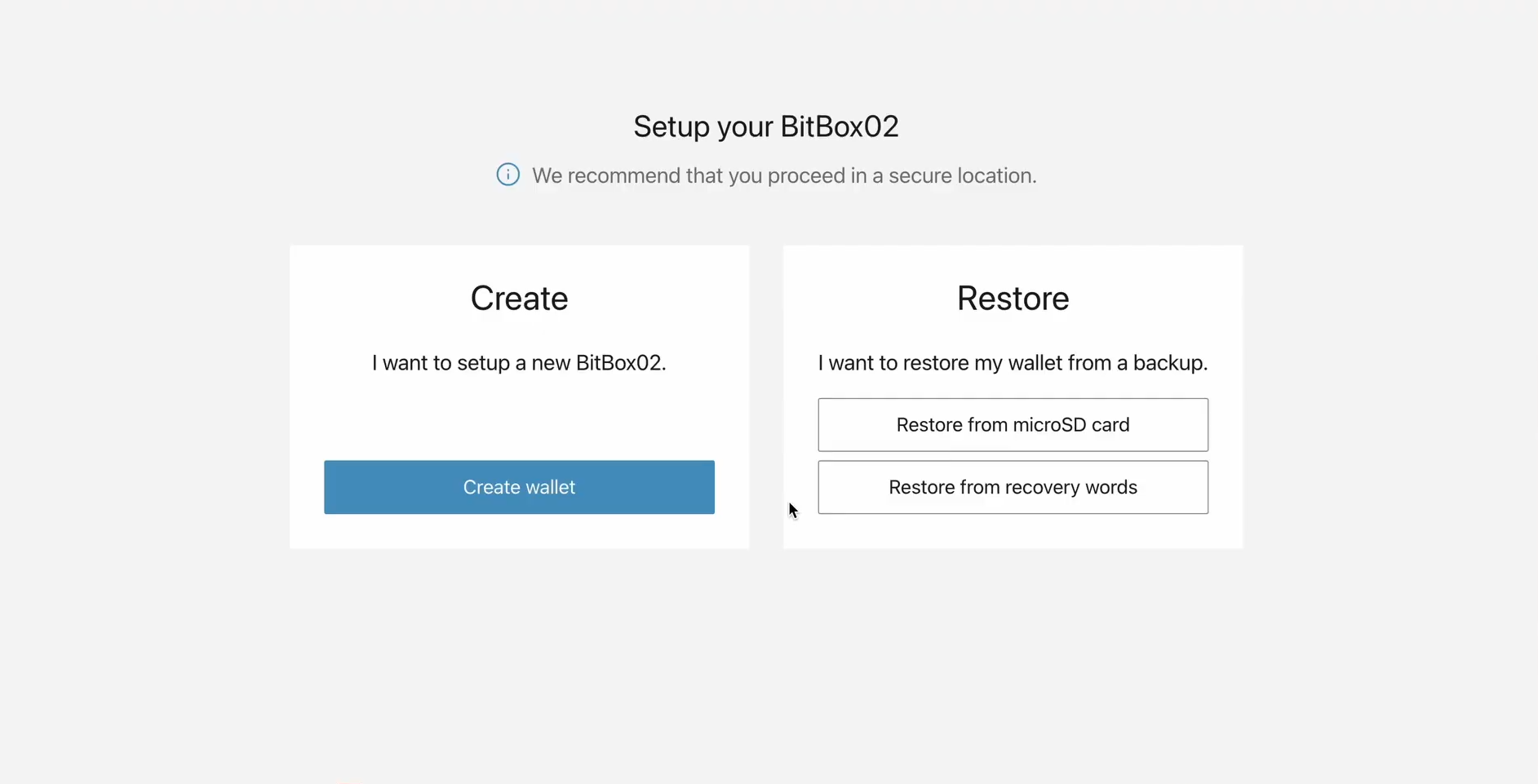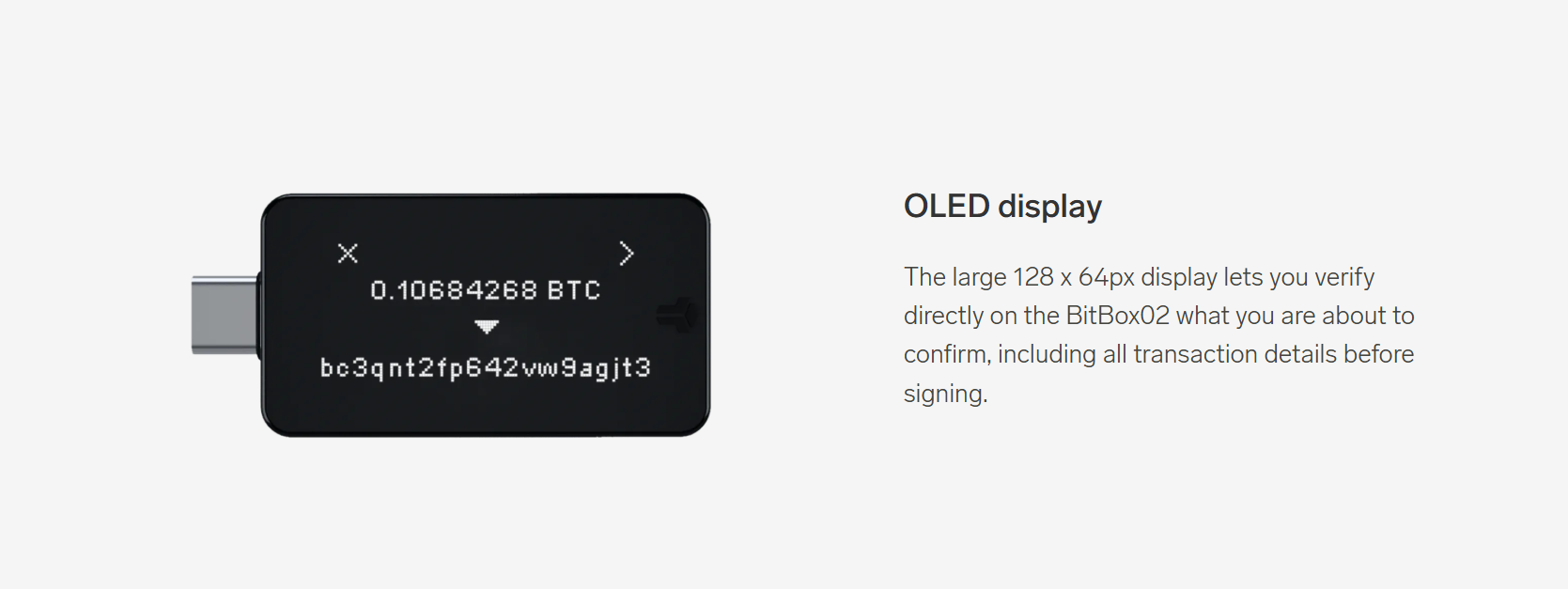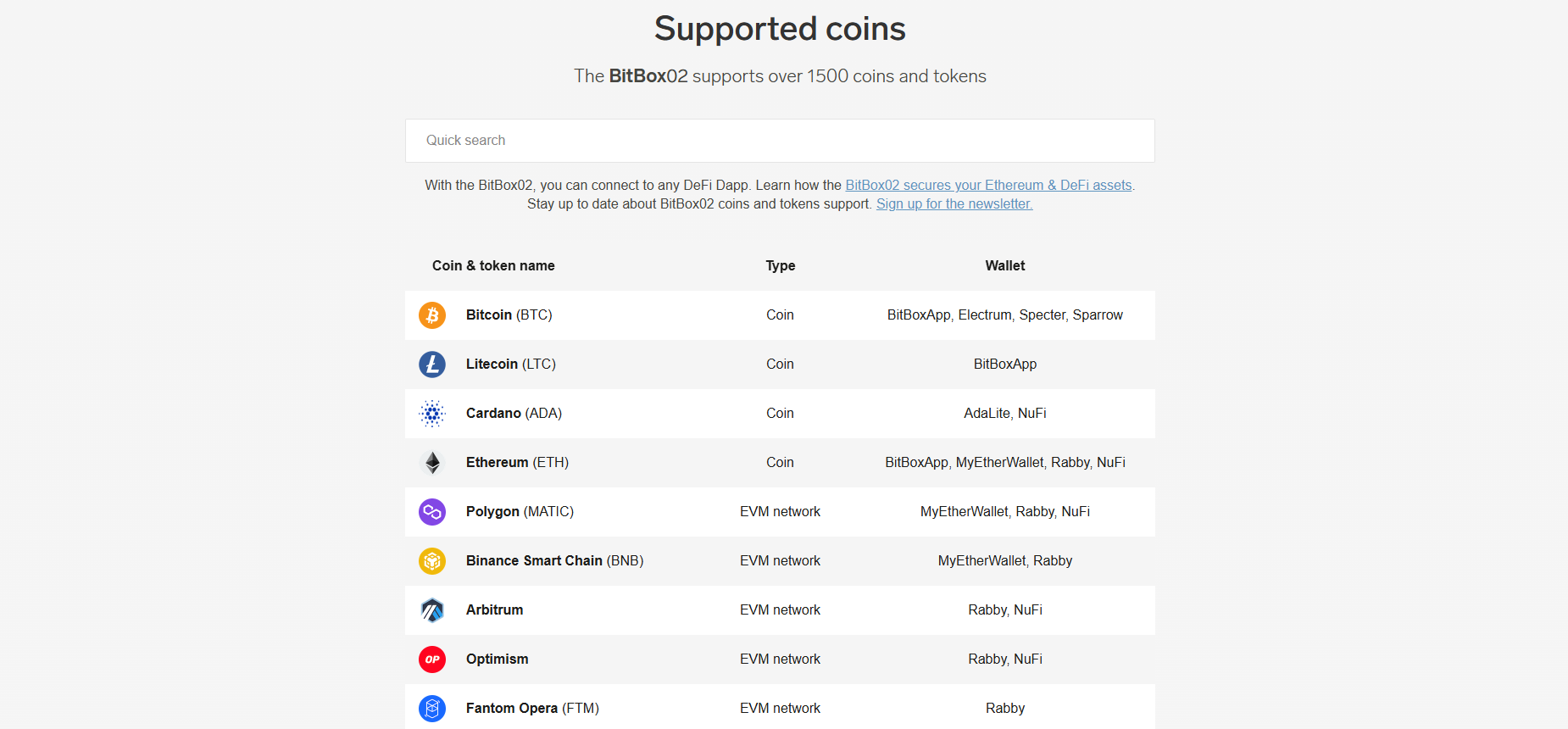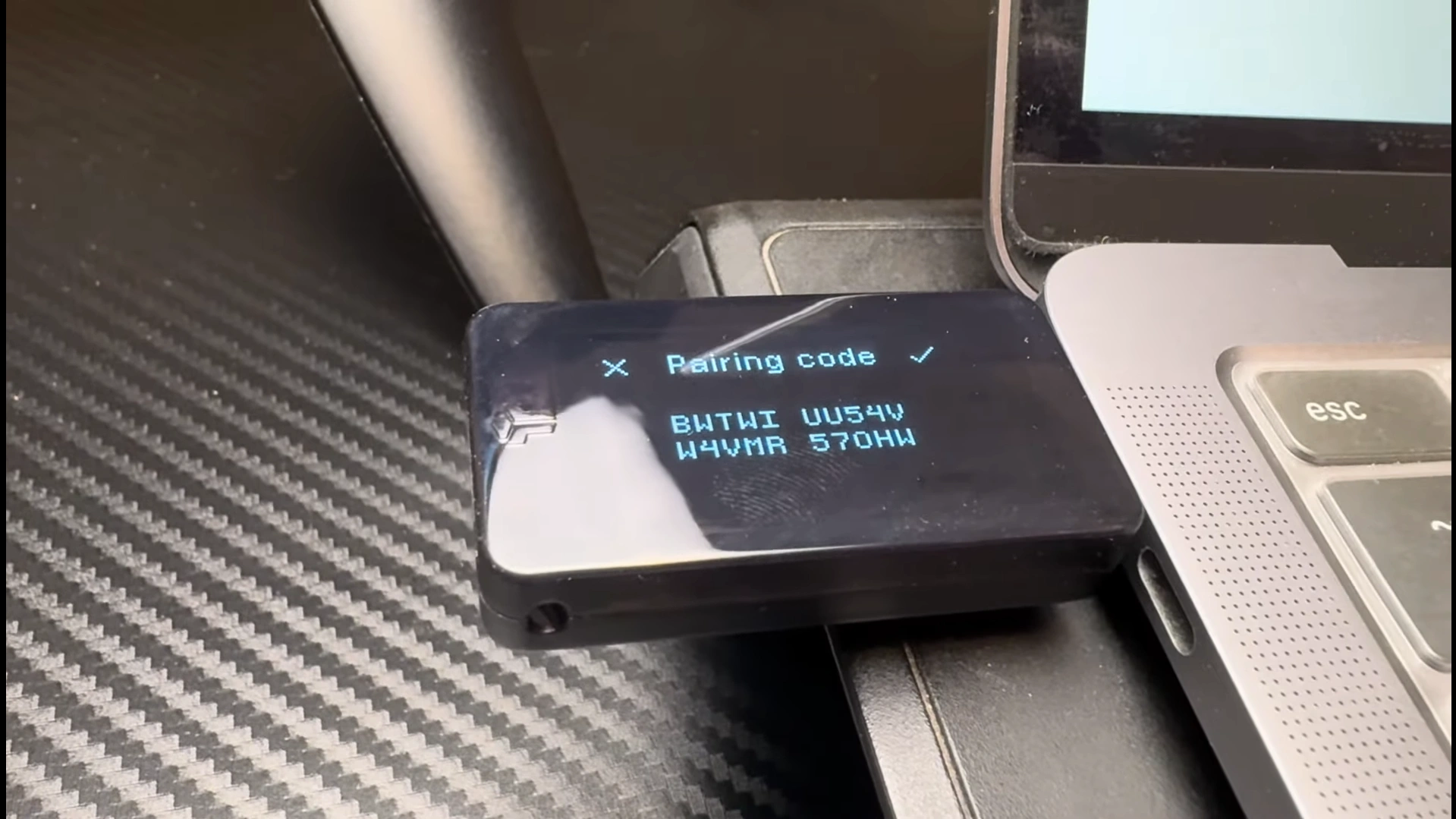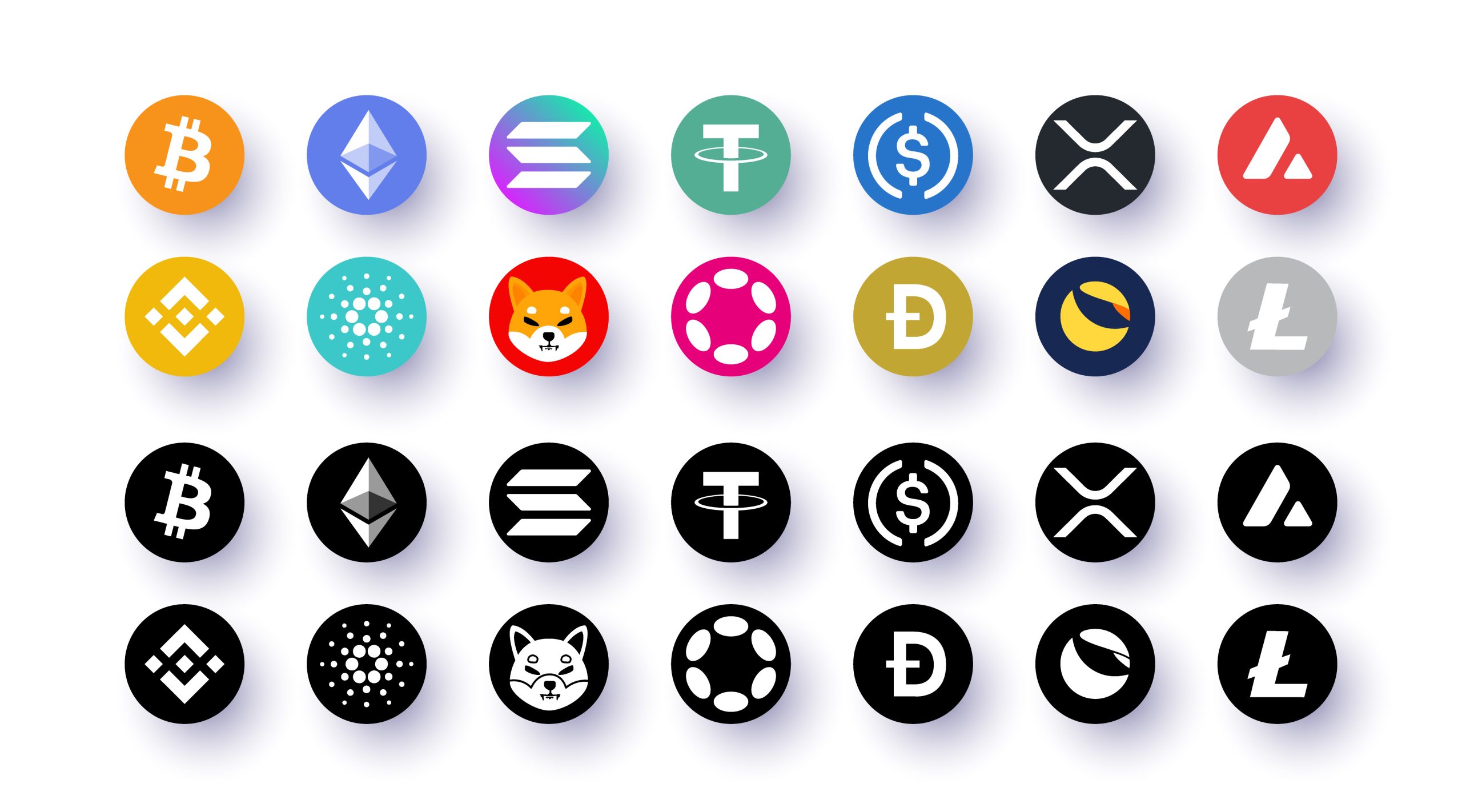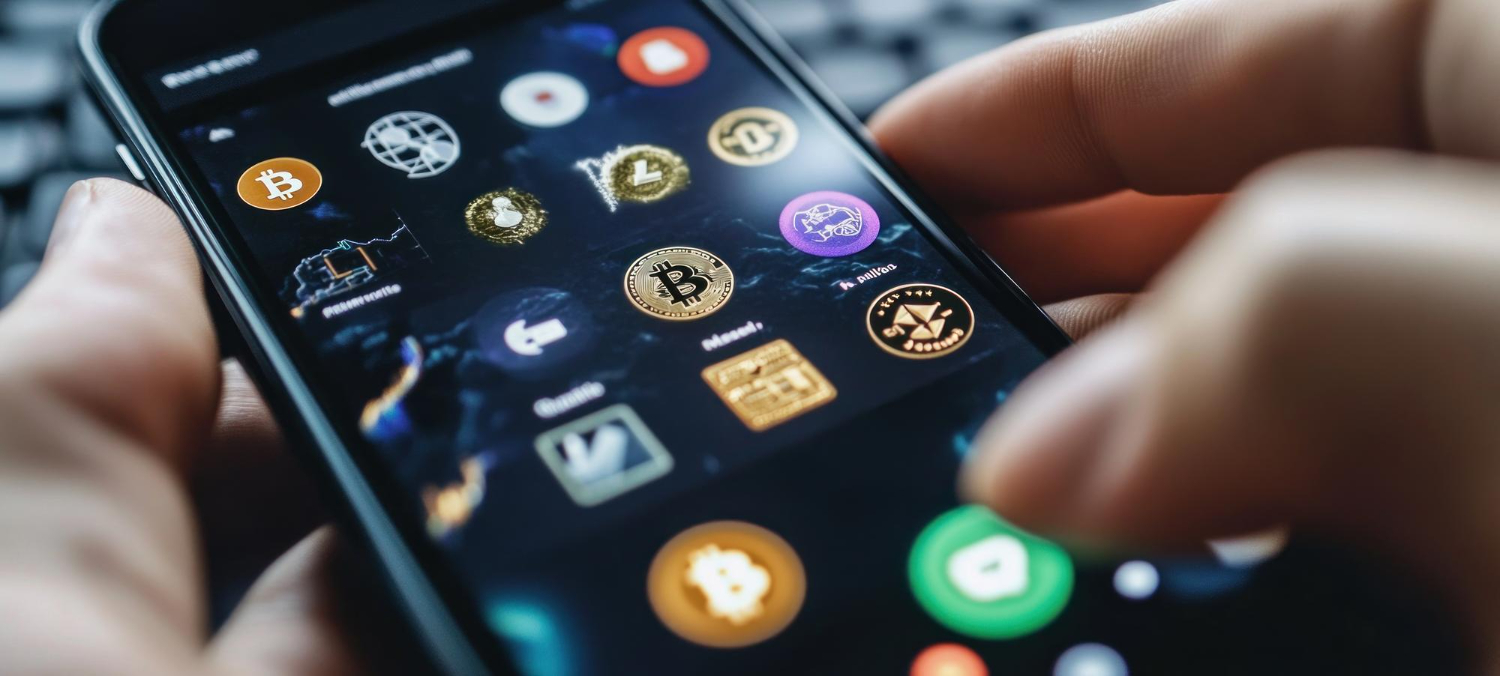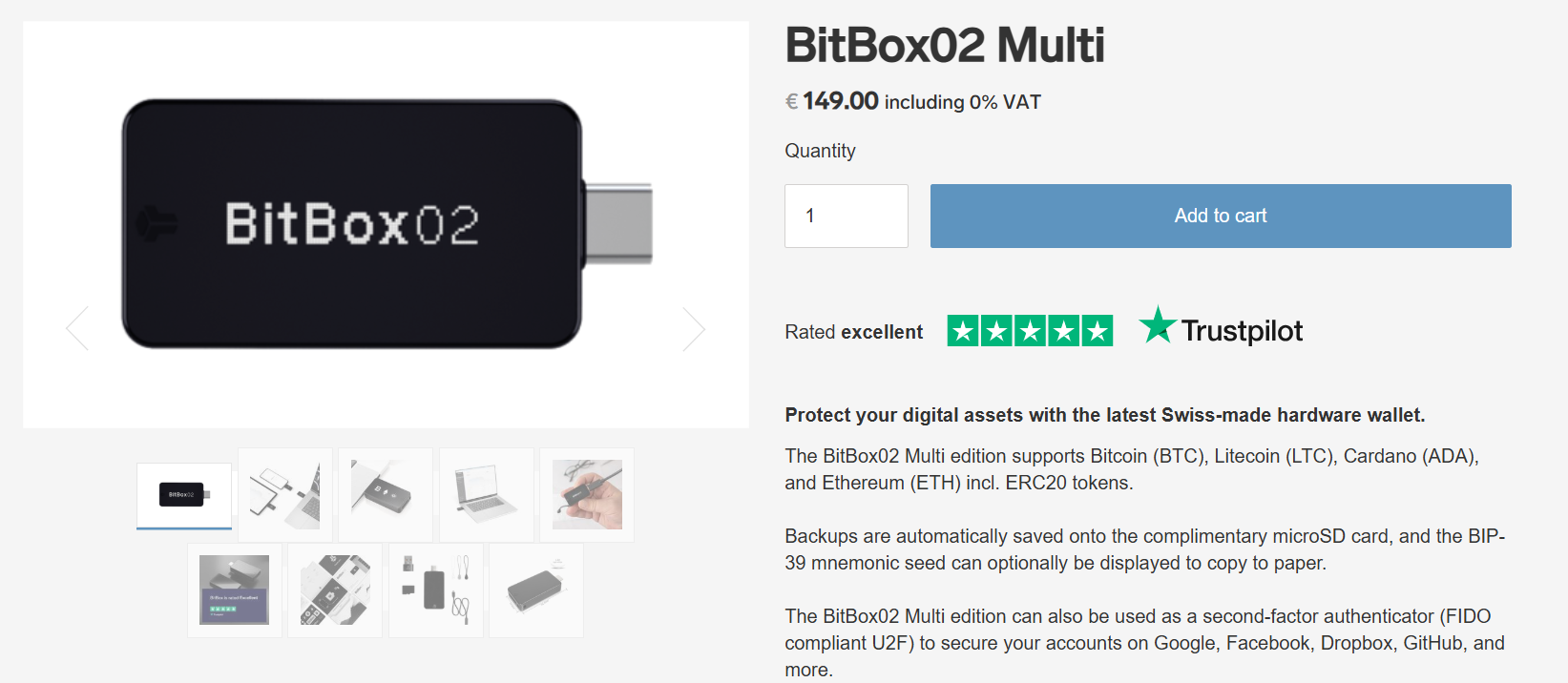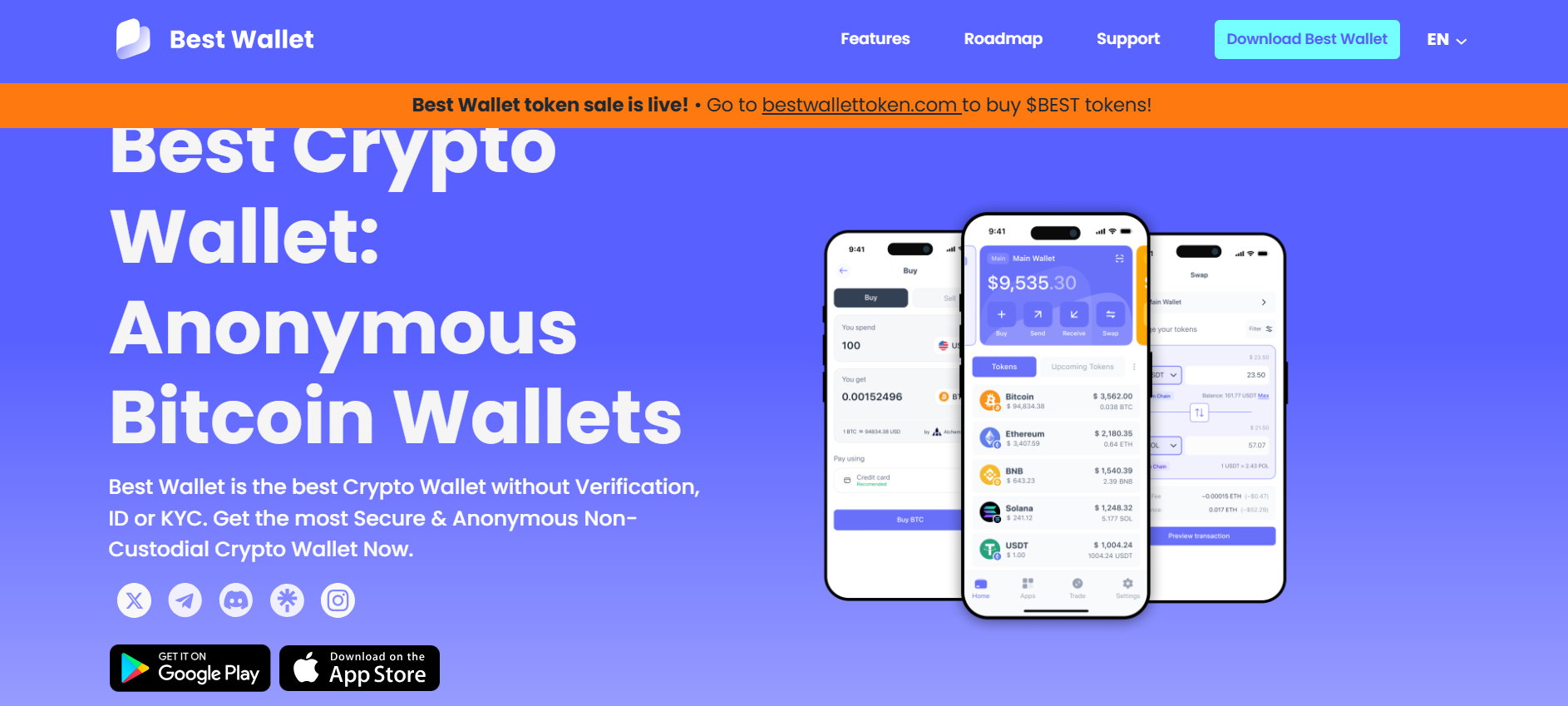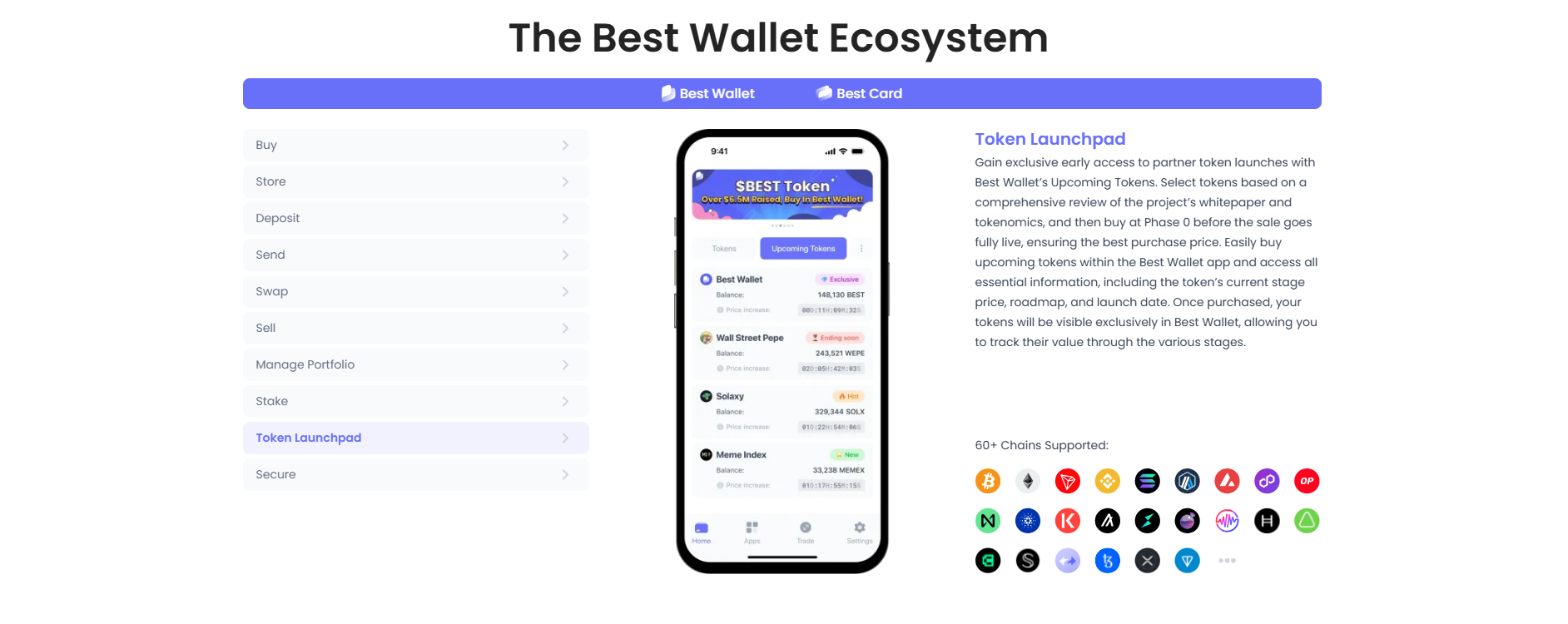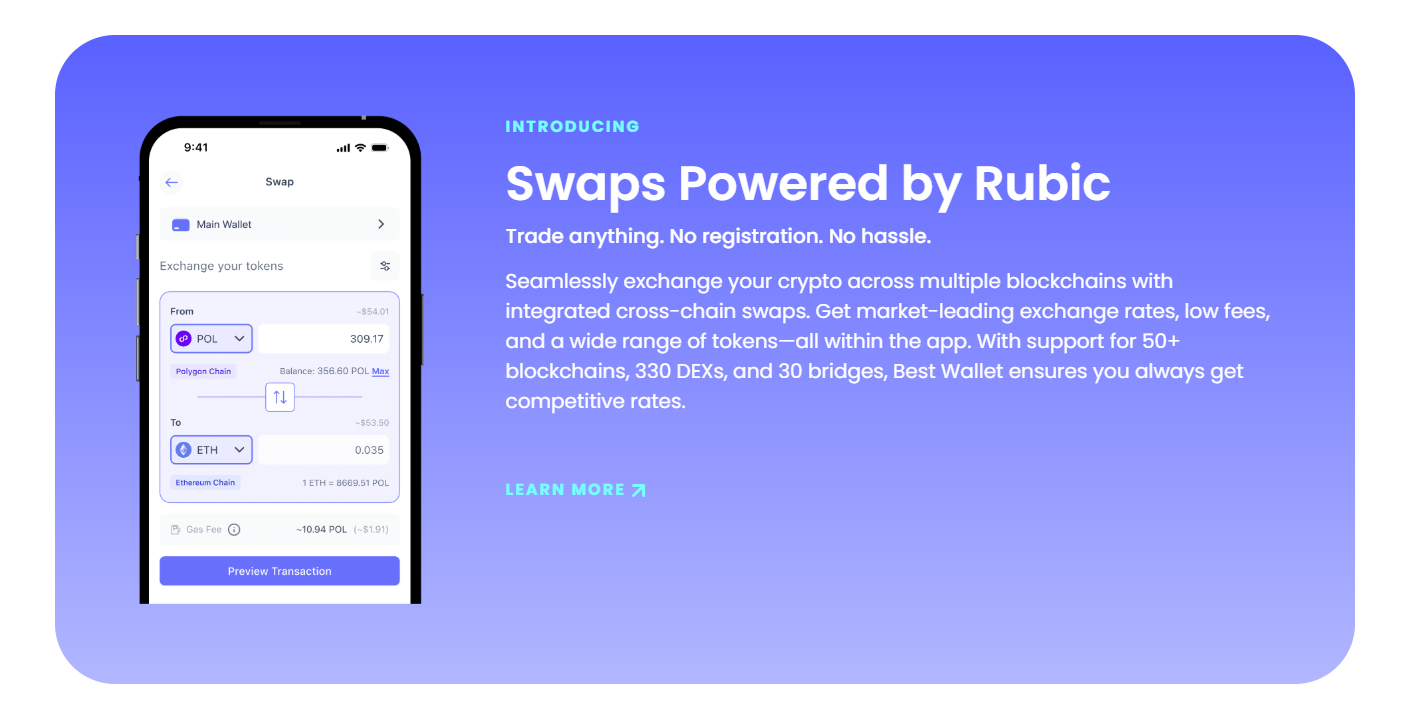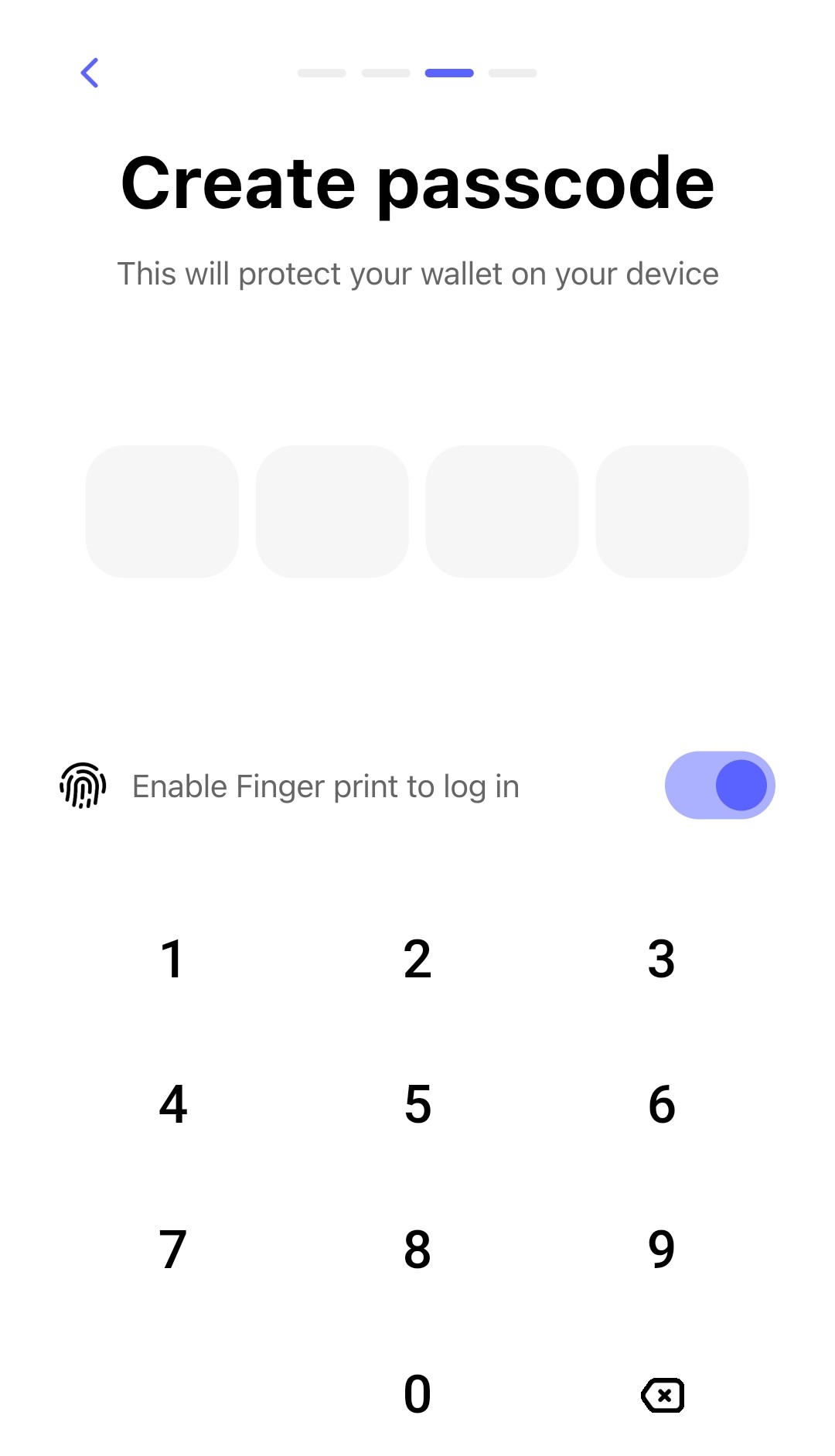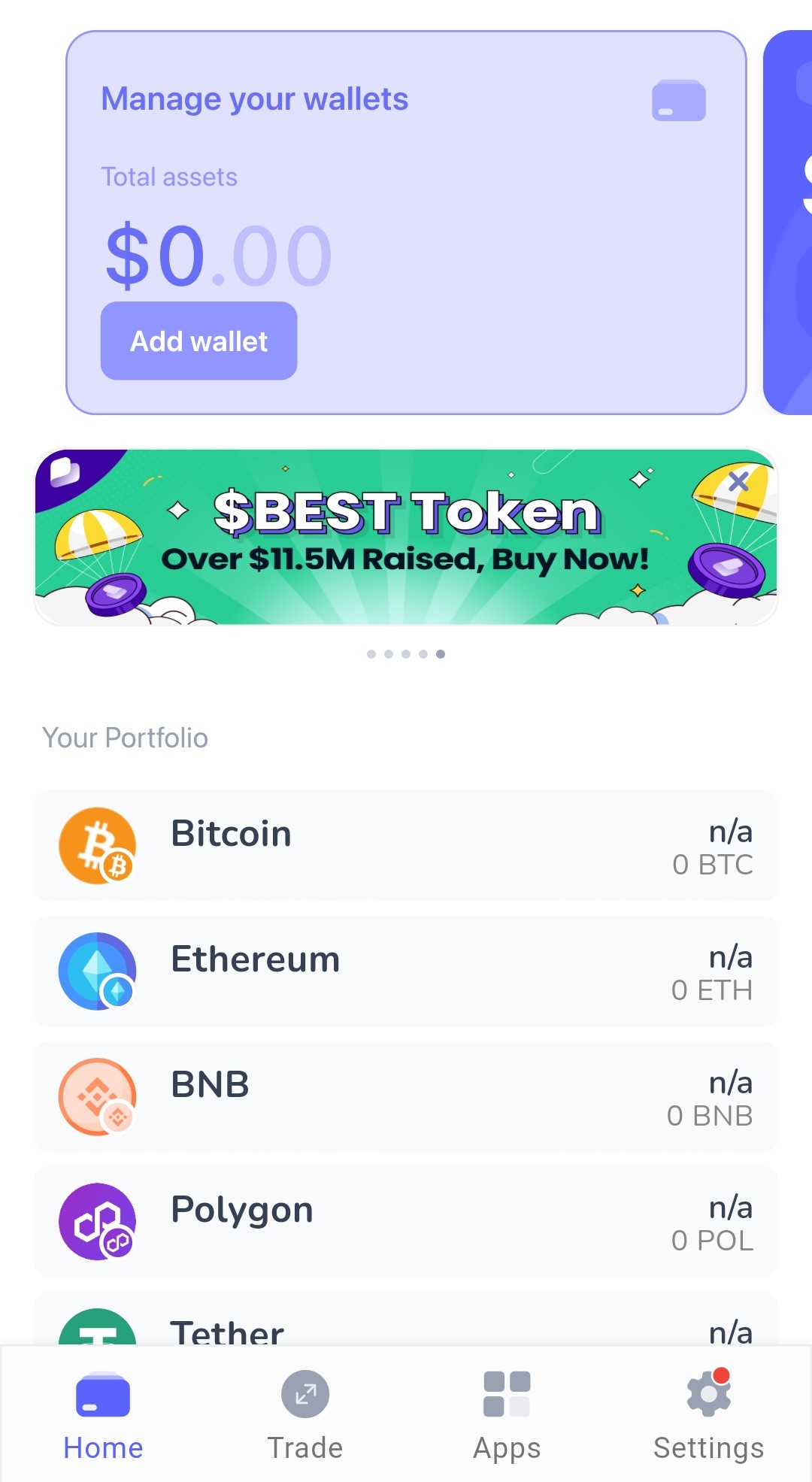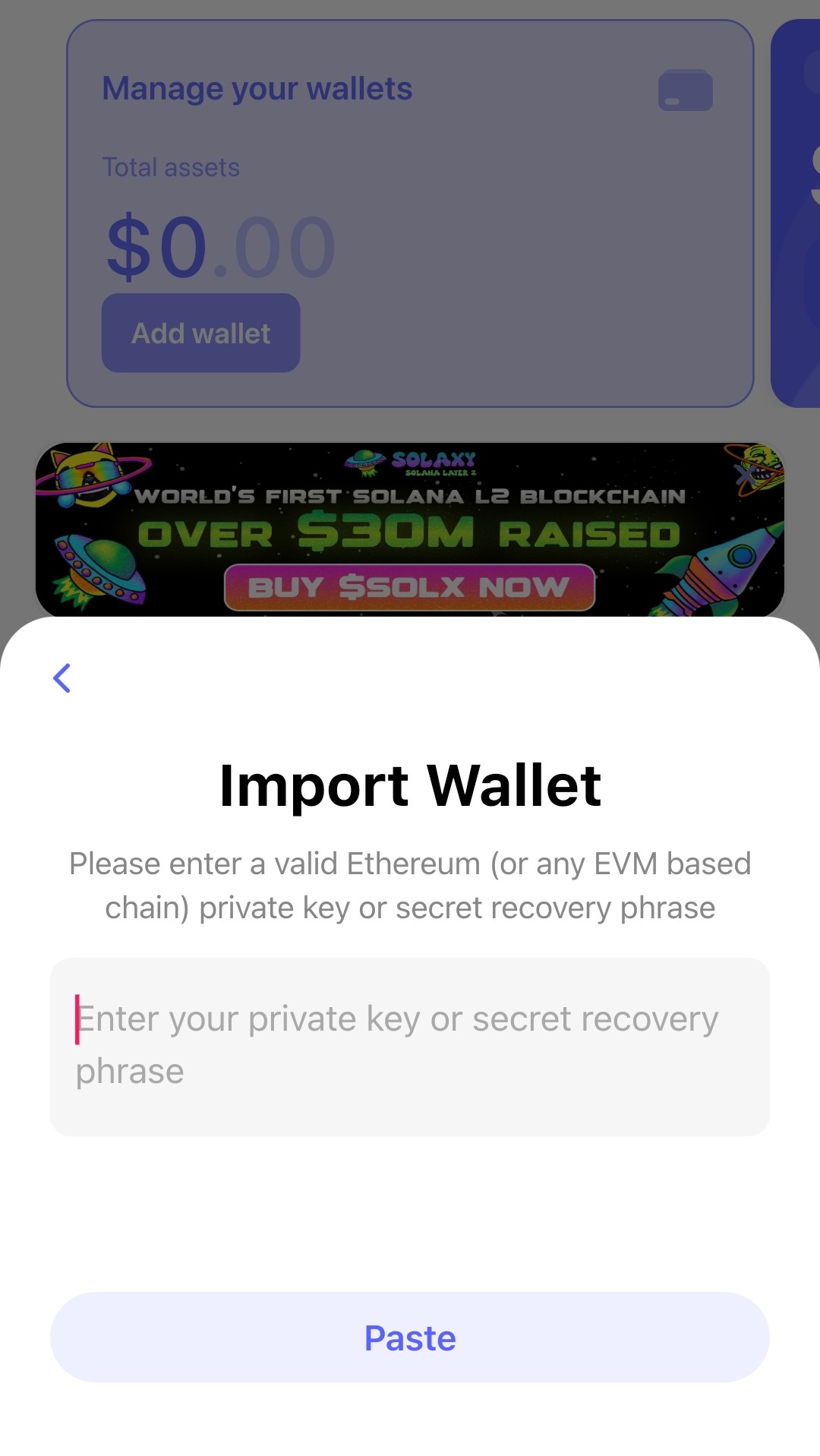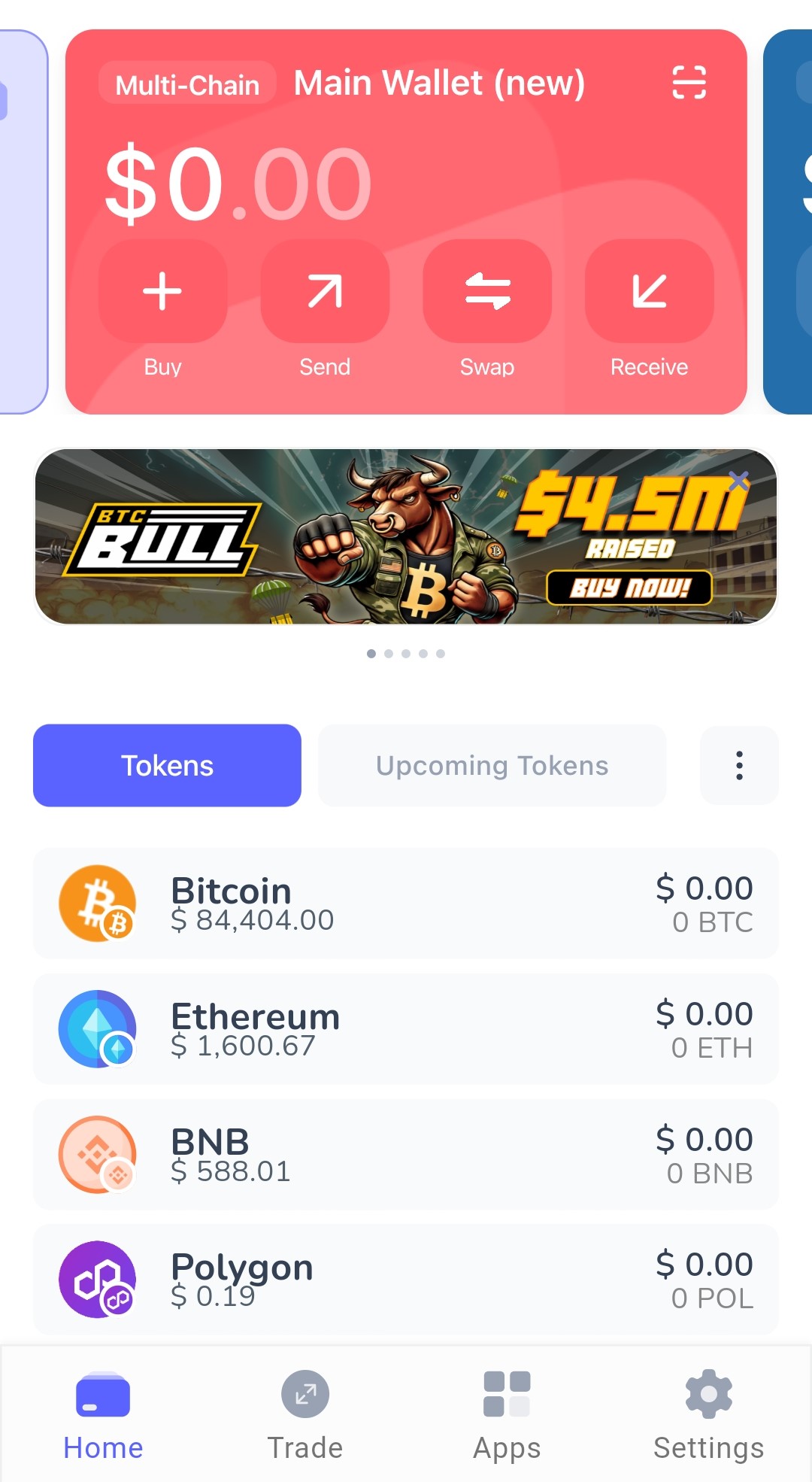The Swiss-made cold wallet BitBox stirred up the industry with its innovative design and control half a decade ago. But in 2025, is it still as good? What are the more competitive and feature-rich alternatives on the market? Find out through our BitBox Wallet review!
-
- Dual-chip Design
- Open-source Firmware and Companion App
- Easy Backup and Restore
- USB-C Connectivity With Capacitive Touch Sensors
- Compact 128 × 64 Pixel White OLED Display
- Supports 1500+ ERC20 Tokens
- FIDO U2F Authentication
- End-to-end Encrypted
- Anti-Klepto Protection
- Full Node Support for Bitcoin and Litecoin
-
- Dual-chip Design
- Open-source Firmware and Companion App
- Easy Backup and Restore
- USB-C Connectivity With Capacitive Touch Sensors
- Compact 128 × 64 Pixel White OLED Display
- Supports 1500+ ERC20 Tokens
- FIDO U2F Authentication
- End-to-end Encrypted
- Anti-Klepto Protection
- Full Node Support for Bitcoin and Litecoin
Show Full Guide
What is the BitBox Cold Wallet?
BitBox Wallet refers to a line of hardware wallets, with the BitBox02 being the most recognized model. This device is developed and manufactured in Switzerland and is designed to store your cryptocurrency private keys offline.
One of the main reasons why cold wallets are safer is that they isolate your keys from online access. By keeping your keys offline, the BitBox Wallet reduces exposure to online threats and malware.
However, you must connect the device to your computer or Android phone via USB-C to manage your assets through the companion BitBox app. So it may not be as secure as fully air-gapped wallets like the Keystone or Ellipal cold wallet.
The wallet features an OLED display and invisible touch sensors for navigation and interactions. The display provides quality visuals, while the sensors ensure transaction approvals occur in a secure, isolated environment.
BitBox Wallet operates with open-source software and firmware. It means you can perform public code audits at any time and check for transparency. However, it also means the firmware structure is publicly available and may be vulnerable to strong cyberattacks.
You can back up your wallet using a microSD card or a BIP39 mnemonic phrase to incorporate redundancy in case of device loss or failure.
BitBox Wallet comes in two main editions: a multi-currency version and a Bitcoin-only version. The multi-currency model supports a broad range of digital assets, while the Bitcoin-only version is tailored for users who focus exclusively on Bitcoin.
With Bitbox, you always retain complete control over your assets, as the wallet does not rely on third parties to access or manage your funds. The device’s minimalist design and straightforward setup process make it accessible to all. Don’t worry if you have limited experience with hardware wallets.
BitBox Cold Wallet Features (Multi-currency and Bitcoin-only)
| Feature | Specification |
|---|---|
| 📏 Dimensions | 54.5 × 25.4 × 9.6 mm (including USB-C plug) |
| ⚖️ Weight | 12 grams (device only); 160 grams with packaging and accessories |
| 📱 Display | 128 × 64 pixel white OLED |
| 🖱️ Input | Capacitive touch sensors for navigation and confirmation |
| 🧱 Body Material | Polycarbonate |
| 🔌 Connectivity | USB-C (USB-A adapter and extension cable included) |
| 💾 Backup | microSD card slot for instant backup; optional BIP39 mnemonic display |
| 🧠 Microcontroller | 120 MHz 32-bit Cortex-M4F, with true random number generator |
| 🛡️ Secure Chip | Hardware-based secure element with integrated random number generator |
| 🔋 Battery | No built-in battery (powered via USB connection) |
| 📷/📡 Camera/Wireless | No camera or wireless connectivity |
BitBox Multi Chain vs BitBox Bitcoin Edition: Main Differences
As mentioned earlier, BitBox had two editions. Multi-chain and Bitcoin only. They do not differ in hardware specs or prices, but they do in the following fields.
| Feature | BitBox02 Multi Edition | BitBox02 Bitcoin-only Edition |
|---|---|---|
| Supported Coins | Bitcoin, Ethereum, Litecoin, Cardano, 1500+ ERC-20 tokens | Bitcoin only |
| Firmware | Multi-asset firmware | Streamlined, Bitcoin-only firmware |
| Security | High; supports multiple assets | Smaller codebase, reduced attack surface |
| FIDO U2F Support | Yes, it can act as a security key for online authentication | No |
| Altcoin Support | Yes | No |
| NFT Support | Limited (via Ethereum DApps) | No |
| Switchable Firmware | No (choice is permanent per device) | No (choice is permanent per device) |
| Target User | Multi-asset holders, DeFi users | Bitcoin maximalists, security-focused users |
| Price | €124.17 | €124.17 |
BitBox Cold Wallet Timeline
2016: Digital BitBox Launch
The original BitBox hardware wallet, known as Digital BitBox, launches as a secure, minimalist cold storage solution for cryptocurrencies, offering one of the first compact and privacy-focused wallets on the market.
2018: Continued Development
Digital BitBox receives ongoing updates, with improved user guides and enhanced backup/restore procedures for wallet recovery, making it easier for users to securely manage their crypto assets.
June 2019: BitBox02 Release
Shift Crypto introduces the BitBox02, a new-generation hardware wallet featuring enhanced security, capacitive touch sensors for intuitive navigation, and fully open-source firmware. The BitBox02 supports multiple cryptocurrencies and offers instant microSD card backup.
October 2023: Lightning Wallet Integration
BitBox announces the development of a non-custodial Lightning wallet within the BitBoxApp, aiming to expand Bitcoin usability beyond cold storage and enable fast, low-fee transactions directly from the app.
October 2024: SLIP-24 Payment Request Standard
BitBox and Pocket expand their partnership by integrating the payment request standard (SLIP-24) into the BitBox02. This sets a new security benchmark for Bitcoin transactions by verifying recipient addresses and improving protection against address manipulation and fraud.
How Does the BitBox Wallet Work?
The BitBox Wallet is a hardware wallet. To use it, you need a mobile or PC. You can easily connect it to any device via a USB-C port. There’s also an adapter cable if Type-C is unavailable (in iOS).
To begin, you download and install the BitBoxApp on your computer or a compatible Android device. You then insert a microSD card into the BitBox02 device. Next, you connect the BitBox02 to your computer using the included USB-C cable.
When you first plug in the device, the app may prompt you to update the firmware. You follow the on-screen instructions to complete this process, interacting with the device using its capacitive touch sensors.
After firmware installation, the device and app will display a pairing code. You verify that the code matches on both the device and the app to confirm a secure connection. The app will then prompt you to either create a new wallet or restore an existing one from a backup.
If you create a new wallet, the device generates a recovery phrase, usually 24 words. You must write these words down by hand and confirm each one on the device, ensuring you have an accurate backup of your wallet.
Once setup is complete, you assign a password to the wallet. This password is required each time you connect the BitBox02 to your computer. The password is entered using the device’s touch sensors, not through your computer keyboard. This step adds a layer of security by keeping input isolated from potentially compromised computers.
To receive cryptocurrency, you select the desired account in the BitBoxApp and generate a receiving address. The app displays the address, and you can verify it directly on the BitBox02 device. This verification step helps you confirm that the address is legitimate and not altered by malware. You can then share the address or its QR code with the sender.
When you want to send funds, you initiate the transaction in the BitBoxApp by entering the recipient’s address and the amount. The app displays the transaction details, and the BitBox02 device prompts you to review and confirm the transaction using the touch sensors.
Only after your confirmation does the device sign the transaction internally and transmit the signed transaction back to the app for broadcast to the blockchain.
Throughout usage, you can create additional backups using the microSD card or by writing down the recovery phrase. The device does not have a battery or wireless connectivity, so it only operates when physically connected to a computer or Android device.
BitBox Hardware Wallet Security & Features
Dual-chip Design
The BitBox hardware wallet uses a dual-chip architecture that combines a general-purpose microcontroller (MCU) with a dedicated secure element. The MCU, typically a 120 MHz 32-bit Cortex-M4F, handles the open-source firmware, user interface, and communication with your computer or mobile device.
In parallel, the secure chip (ATECC608B) provides hardware-level security for cryptographic operations and key management. Sensitive data, such as private keys, is encrypted and split between the MCU and the secure chip.
The secure chip enforces delays and limits on unlock attempts (10 attempts before reset), generates true random numbers, and stores unique attestation keys for device authenticity checks. This separation of roles means that even if one chip is compromised, the overall system retains a high level of security, and the secure chip never learns your cryptocurrency secrets.
Open-source Firmware and Companion App
BitBox devices run open-source firmware, which you and the security community can inspect, audit, and verify for vulnerabilities or malicious code. The firmware operates on the microcontroller unit (MCU), which grants full transparency and reproducibility.
The BitBoxApp, also open-source, serves as the companion software for managing your wallet, sending and receiving transactions. It also takes care of backups or firmware updates for your hardware unit.
By keeping both the firmware and app open-source, BitBox enables independent verification of its security claims and allows developers to contribute improvements or integrations. The firmware enforces secure boot, only accepting signed updates. Also, the app verifies the device’s authenticity using cryptographic attestation from the secure chip.
Easy Backup and Restore
BitBox simplifies backup and restore processes by supporting both microSD card and BIP39 mnemonic phrase options. During setup, you can create an instant encrypted backup of your wallet’s seed on a microSD card, which you can store securely offline.
Alternatively, you can display and record a 24-word BIP39 recovery phrase, compatible with many other wallets. If you ever need to restore your wallet, you simply insert the backup microSD card or enter the recovery phrase in the BitBoxApp or any BIP39-compatible wallet.
The device does not store backups internally, and the microSD card contains only encrypted data. So, even if the device is lost or stolen, the chance of assets being exposed or compromised remains minimal. This dual backup method provides flexibility and redundancy for wallet recovery.
USB-C Connectivity With Capacitive Touch Sensors
The BitBox hardware wallet features a native USB-C interface to connect the device directly to modern computers and Android smartphones without needing adapters. USB-C provides a robust and reversible physical connection, supporting both data transfer and power delivery.
In addition, the device integrates capacitive touch sensors along its sides for inputs, confirming actions, and entering passwords. These touch sensors detect your finger placement and gestures through changes in electrical capacitance. The advantage over physical buttons here is that there’s no risk of wear, tear, and malfunctioning (stuck or broken buttons).
Overall, the design reduces mechanical wear and minimizes potential points of failure. However, the polycarbonate build may not be as sturdy as air-gapped wallets. The wallet may be weak against physical impacts. Many users have also reported that the BitBox wallet easily scratches.
Compact 128 × 64 Pixel White OLED Display
BitBox incorporates a white OLED display for a high-contrast, energy-efficient interface. It’s nothing fancy, though—just a 128 × 64-pixel display. Although small, the display clearly shows transaction details, addresses, and prompts directly on the device. The upside is that you get to visually verify sensitive data before confirming actions.
OLED technology offers fast response times and wide viewing angles, ensuring that you can read information clearly under various lighting conditions. The display’s compact size fits the device’s minimalist form factor while still delivering sufficient resolution for QR codes, alphanumeric strings, and menu navigation.
The OLED display supports secure, air-gapped verification by rendering transaction and security details on the device itself. It also reduces reliance on potentially compromised host devices. The downside is, it’s downright small. If you have eye issues or trouble reading small-sized characters, we recommend double-checking whether you’re comfortable with it before transferring crypto keys.
Supports 1500+ ERC20 Tokens
The BitBox hardware wallet is broadly compatible with over 1,500 ERC20 tokens built on the Ethereum blockchain. This extensive support allows you to manage diverse digital assets from a single device.
Examples of supported tokens include Chainlink (LINK), Basic Attention Token (BAT), and USD Coin (USDC). The device recognizes these tokens natively through the BitBoxApp. The app further lets you check balances and receive and send supported assets without additional configuration.
FIDO U2F Authentication
BitBox integrates FIDO Universal 2nd Factor (U2F) authentication, enabling you to use the device as a physical security key for online accounts that support this standard. When you register the BitBox as a U2F device with compatible services, it generates and stores unique authentication secrets within its secure element.
During login, you confirm authentication requests using the device’s touch sensors, which helps prevent unauthorized access even if your password is compromised. This feature extends the device’s utility beyond cryptocurrency management with hardware-based two-factor authentication.
End-to-end Encrypted
BitBox hardware wallets implement end-to-end encryption for all communication between the device and the BitBoxApp. When you connect the wallet via USB, the device and the app establish a secure channel using the Noise Protocol, a modern cryptographic handshake framework.
This protocol encrypts all data packets exchanged between your computer and the wallet, including transaction details, addresses, and device commands. Thanks to the protocol, if an attacker intercepts the data stream, they cannot decipher or manipulate the information in transit.
The system also uses out-of-band authentication to verify device legitimacy and prevent man-in-the-middle attacks. BitBox significantly reduces eavesdropping risks or unauthorized data injection as it encrypts all USB communications. Data confidentiality and integrity stay intact throughout every interaction.
Anti-Klepto Protection
BitBox integrates Anti-Klepto protection to defend against nonce covert channel attacks, a subtle vulnerability in digital signature generation that’s also known as Dark Skippy.
When you sign a transaction, the hardware wallet must generate a random number, called a nonce, which is crucial for the security of ECDSA signatures. A compromised or malicious device could manipulate this nonce to leak private key information through the signature itself and expose your assets without any visible signs.
The Anti-Klepto protocol addresses this by requiring both the BitBox device and the host application (such as the BitBoxApp) to contribute randomness to the nonce. The device first commits to its nonce, and then the host app adds its own, making it mathematically infeasible to control the final nonce value.
This collaborative process ensures that no single party can manipulate the signature process to leak sensitive information. Anti-Klepto protection operates transparently during every signature operation. It’s a dynamic defense against advanced key extraction techniques that can bypass even air-gapped setups.
Full Node Support for Bitcoin and Litecoin
The BitBox02 lets you connect directly to your Bitcoin or Litecoin full node via the BitBoxApp. It acts like a self-validated transaction verification that doesn’t have to rely on third-party servers. You configure the app to interface with an Electrum server linked to your node so that all blockchain data, including balances, transaction history, and broadcasted transactions, originates from your trusted node.
For Bitcoin, the integration supports advanced features like Coin Control that let you select specific UTXOs (unspent transaction outputs) when sending funds. The app also enables you to route transaction data through Tor to obscure your network activity further.
Litecoin users benefit from identical functionality as the app handles LTC transactions through the same self-hosted node framework.
BitBox Hardware Wallet – Supported Coins
The BitBox02 hardware wallet is available in two editions: the Multi edition and the Bitcoin-only edition. The Multi edition supports a broad range of digital assets, while the Bitcoin-only edition is limited to Bitcoin for maximum security and minimal attack surface.
With the Multi edition, you can manage over 1,500 coins and tokens, including major cryptocurrencies and a wide array of ERC20 tokens. The Bitcoin-only edition restricts functionality to Bitcoin.
Major Coins and Networks
The Multi edition natively supports several leading cryptocurrencies. You can store and transact with Bitcoin (BTC), Ethereum (ETH), Litecoin (LTC), and Cardano (ADA). These assets are accessible through the BitBoxApp and, in some cases, through third-party wallets.
For example, Cardano management is available via AdaLite and NuFi, while Ethereum and Litecoin can be managed directly in the BitBoxApp.
ERC20 Tokens and DeFi Assets
A significant feature of the BitBox02 Multi edition is its support for over 1,500 ERC20 tokens. These tokens operate on the Ethereum network and include assets such as Chainlink (LINK), Basic Attention Token (BAT), USD Coin (USDC), Tether (USDT), Maker (MKR), Dai (DAI), and Shiba Inu (SHIB).
The BitBoxApp gives a curated selection of these tokens directly. For tokens not listed in the BitBoxApp, you can use third-party wallets like Best Wallet, MyEtherWallet, Rabby, or NuFi to access and control your holdings. Although limited, it still lets you interact with various DeFi projects and tokenized assets.
EVM-Compatible Networks
The BitBox02 also supports several Ethereum Virtual Machine (EVM) compatible networks. By connecting your device to compatible third-party wallets, you can manage assets on Polygon (MATIC), Binance Smart Chain (BNB), Arbitrum, Optimism, and Fantom Opera (FTM). This flexibility allows you to interact with a broader ecosystem beyond the Ethereum main net, although native support in the BitBoxApp may be limited for these networks.
Limitations and Considerations
While the BitBox02 Multi edition offers broad support, it does not cover every blockchain or token standard. It does not support assets based on TRON, Solana, or other non-EVM networks. NFT standards such as ERC-721 or ERC-1155 are also not natively managed through the BitBoxApp.
The number of directly supported tokens within the BitBoxApp is curated, so you may need to rely on external wallets for full access to all ERC20 tokens. Additionally, the development team does not plan to add new blockchains soon, as each addition requires significant firmware updates and ongoing maintenance.
BitBox Wallet: Advantages & Disadvantages
BitBox is a decent hardware wallet. It has a unique set of features that’re both simple and practical. Despite that, it also has visible flaws.
| Advantages | Disadvantages |
|---|---|
| ✅ High security: dual-chip architecture, open-source firmware, secure element, encrypted backups, and password protection.
✅ User-friendly: intuitive touch controls, minimalistic app, easy setup, and dynamic in-app guides. ✅ Offline backup and recovery with microSD card. ✅ Privacy features: Tor and Tails OS compatibility, plausible deniability, subtle design. ✅ Multisig support, DeFi support, and unified account management. ✅ Swiss-made, durable, portable, and cost-effective. ✅ Smart verification: displays transaction fees and addresses on device, warns about excessive fees. |
❌ Limited asset support: mainly Bitcoin, Ethereum, Litecoin, Cardano, Chainlink, and ERC-20 tokens; lacks support for some altcoins and NFTs.
❌ Recovery risk: relies heavily on SD card backups; loss or damage to the SD card can make recovery difficult. ❌ Fewer features than industry leaders like Ledger and Trezor. ❌ No air-gapped operation (unlike some competitors). ❌ No SegWit support and limited NFT compatibility. ❌ Issues with forgotten passwords or passphrases can lock users out; recovery can be complex. ❌ Some advanced features (like multisig) may require more technical knowledge. |
Where Can You Buy a Bitbox Cold Wallet?
You can purchase the BitBox cold wallet directly from the official BitBox website (bitbox.swiss), which ships to the United States. Additionally, BitBox wallets occasionally appear on major platforms like eBay and Walmart, but buying from the official site ensures authenticity and warranty support.
In India, BitBox wallets are available through local e-commerce sites such as IndiaMART. Verified vendors offer domestic shipping and customer support there. Some crypto-focused online shops may also occasionally list BitBox wallets.
| Location | Official Store / Reseller | Price (Local Currency) | Notes |
|---|---|---|---|
| USA | bitbox.swiss, The Crypto Merchant | $140–$150 USD | Duties & taxes included; also on eBay, Walmart. |
| India | bitbox.swiss, IndiaMART | ~₹12,000–₹13,000 INR | Price varies by reseller; international shipping from official store. |
| Europe (EU) | bitbox.swiss, hardware-wallet.shop | €119–€139 EUR | All duties & taxes paid; fast DHL/UPS shipping. |
| UK | bitbox.swiss, Monix | ~£105–£115 GBP | Duties & taxes included; local resellers offer next-day delivery. |
| Canada | bitbox.swiss | ~$190–$205 CAD | Duties & taxes included; limited local retail options. |
| Australia | bitbox.swiss | ~$215–$225 AUD | International shipping; local resellers rare. |
| Japan | bitbox.swiss | ~¥21,000–¥24,000 JPY | International shipping; limited local reseller presence. |
| Russia | bitbox.swiss | ~₽13,000–₽15,000 RUB | International shipping; local retail options limited. |
| Ukraine | bitbox.swiss | ~₴5,500–₴6,000 UAH | International shipping; local reseller options limited. |
| France | bitbox.swiss, hardware-wallet.shop | €119–€139 EUR | Duties & taxes included; fast shipping from Switzerland or EU-based retailers. |
Across the European Union, the BitBox cold wallet is easily accessible from the official BitBox website. Several EU-based crypto hardware retailers may also stock BitBox wallets.
In the UK, you can buy BitBox wallets from official resellers like Monix. They usually offer quick local delivery and customer support. The wallets are also sometimes available on eBay UK and other tech marketplaces.
Canadian customers can order directly from the BitBox website and enjoy international shipping. Local Canadian crypto retailers may have limited stock, so the official site is usually the best option.
With international shipping available, Australians can also purchase BitBox wallets from the official BitBox website. Local resellers are rare, so ordering directly is recommended for authenticity and support.
Why Best Wallet Might Be a Better Alternative?
BitBox is a secure wallet, no doubt. But just like every other cold wallet, it has its drawbacks. For starters, you must use a mobile or computer device to access BitBox. Without a companion device and dedicated app, it’s just … a piece of hardware.
Best Wallet, on the other hand, is a hot wallet that runs from your phone. It doesn’t require any additional device or app like the BitBox does. Rather, it’s a decentralized, non-custodial program you can use like other apps. Best Wallet supports most major crypto chains, thousands of tokens, DeFi Apps, Web3 services, and more.
What makes it a better choice? Let’s find out with a side-by-side comparison.
Best Wallet vs BitBox Cold Wallet: Comparison
| Aspect | Best Wallet | BitBox02 |
|---|---|---|
| Type | Software (hot) wallet (Android/iOS app) | Hardware (cold) wallet |
| Supported Assets | Hundreds of tokens across Ethereum, Polygon, Avalanche, Tron, Binance Smart Chain, Bitcoin, Cardano, and more | Multi edition: Bitcoin, Litecoin, Cardano, Ethereum, 1500+ ERC-20 tokens; Bitcoin-only edition: BTC only |
| Fiat On/Off Ramp | Yes; supports 80+ fiat currencies, multiple payment processors (bank card, PayPal, Apple Pay, etc.) | No direct fiat on/off ramp |
| Staking/DeFi | Built-in staking aggregator, DEX, and token launchpad | Limited DApp/DeFi support via WalletConnect (Ethereum only) |
| NFT Support | Under development. | Limited (via Ethereum DApps and third-party integration) |
| Ease of Use | Intuitive app interface, free to download, no KYC, fast setup | Setup via desktop app, microSD backup, no iOS app, physical device required |
| Platform Fees | No platform fees; exclusive benefits for $BEST holders | No platform fees, but hardware purchase required |
| Security | Non-custodial, but hot wallet (online exposure risk) | Cold storage, open-source firmware, microSD backup, Swiss security standards |
| Device Required | Smartphone (Android/iOS) | Physical device (USB-C, desktop app) |
| Backup/Recovery | App-based backup/recovery | Encrypted backup via microSD card |
| Availability | Global (app stores) | Global (official store, resellers) |
| Cost | Free | ~$140–$150 (hardware purchase) |
Key Advantages of Best Wallet Over BitBox Wallet
Best Wallet, as a non-custodial hot wallet, offers several distinct advantages compared to the BitBox02 hardware wallet:
Broader Asset and Chain Support: Best Wallet supports hundreds of tokens across multiple chains (Ethereum, Polygon, Avalanche, Tron, Binance Smart Chain, Bitcoin, Cardano, and more), whereas BitBox02 Multi Edition supports Bitcoin, Ethereum, Litecoin, Cardano, and ERC-20 tokens. The Bitcoin-only BitBox02 is limited to BTC. Get access to all upcoming crypto to explode on one platform.
All-in-One Mobile Experience: Best Wallet bundles DEX aggregation, token analytics, scam/spam detection, and market news into a single mobile app. BitBox is focused on offline security and lacks these integrated features.
Web3 App Access: Best Wallet lets users interact directly with various Web3 apps and smart contracts across 60+ blockchains, including Ethereum, Polygon, BSC, and more. BitBox is a hardware wallet focused on secure storage and does not natively support Web3 dApp interaction.
DeFi Integration: Best Wallet provides built-in access to DeFi protocols for swapping, staking, lending, and liquidity pools, all from within the app. BitBox users need to connect their device to third-party interfaces and are limited mainly to Ethereum DeFi via WalletConnect.
ICO & Token Presale Listings: Best Wallet features an “Upcoming ICOs” tab to give users early access to new ICOs and token presales, often at the lowest entry prices. BitBox does not offer ICO, presale discovery, or direct participation tools.
Integrated Fiat On/Off Ramp: Best Wallet enables the buying and selling of crypto with 80+ fiat currencies using payment methods like bank cards, PayPal, and Apple Pay. BitBox02 does not offer direct fiat on/off ramp integration.
No Upfront Cost: Best Wallet is free to download and use, while BitBox02 requires a hardware purchase (typically $130–$150 or local equivalent).
Instant, User-Friendly Setup: Best Wallet can be set up in minutes on any modern smartphone (Android/iOS), with no physical device required or complex backup processes. BitBox02 requires desktop or Android setup, a microSD card for backup, and physical device management.
Global Availability and Accessibility: Best Wallet is accessible worldwide via app stores, without shipping or customs delays. BitBox02 relies on physical distribution, which can be slower and less convenient.
No KYC: Best Wallet allows users to maintain privacy and anonymity without mandatory KYC for wallet creation, while BitBox02 also does not require KYC but is subject to shipping and purchasing records.
How to Open a Best Wallet (Wallet)
You can install Best Wallet directly from the Google Play Store or Apple App Store, or by clicking the link below.
Sign up with a secure email to create your Best account. A multi-chain wallet will be set up for you automatically. Be sure to establish a 4-digit passcode during setup.
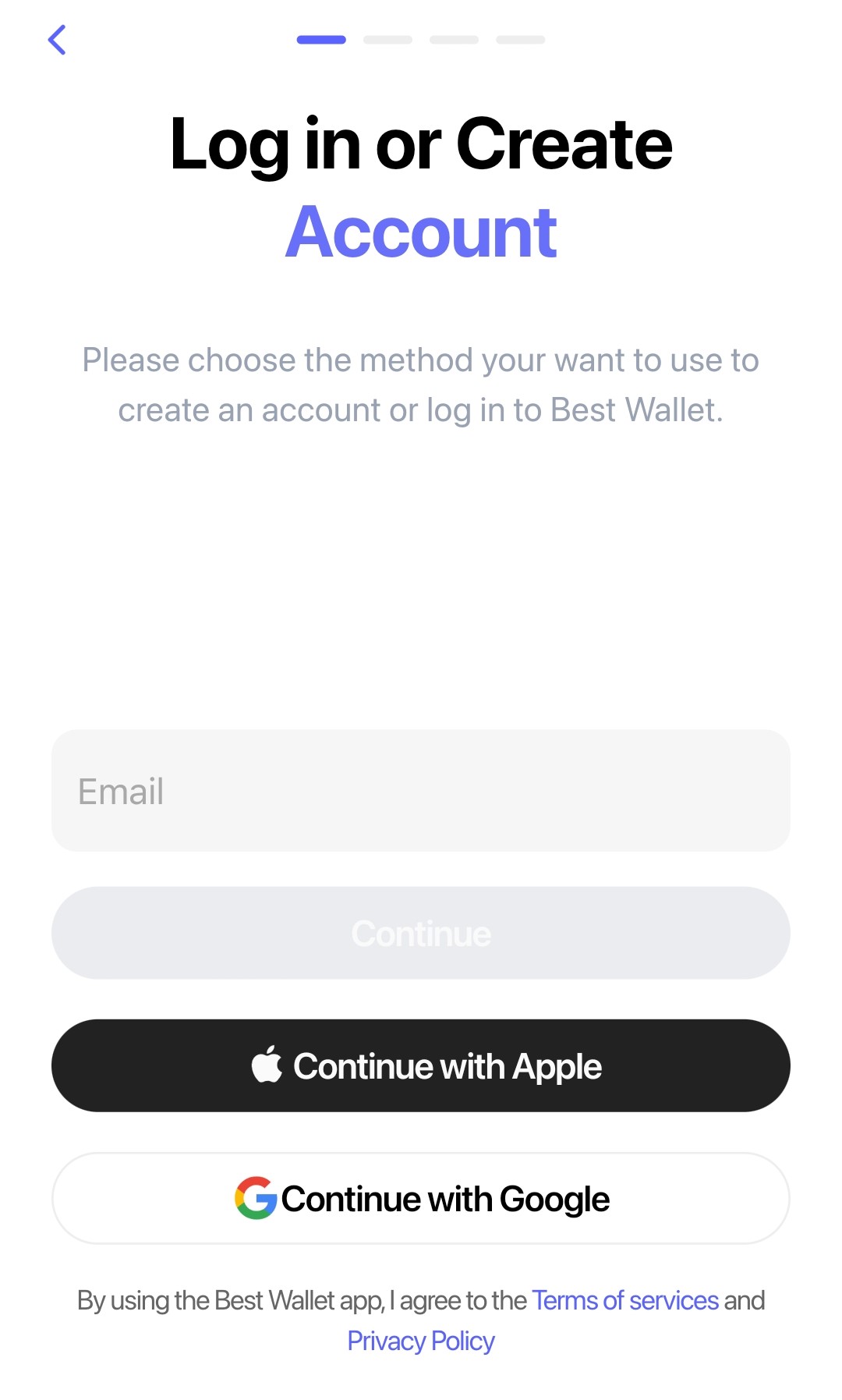
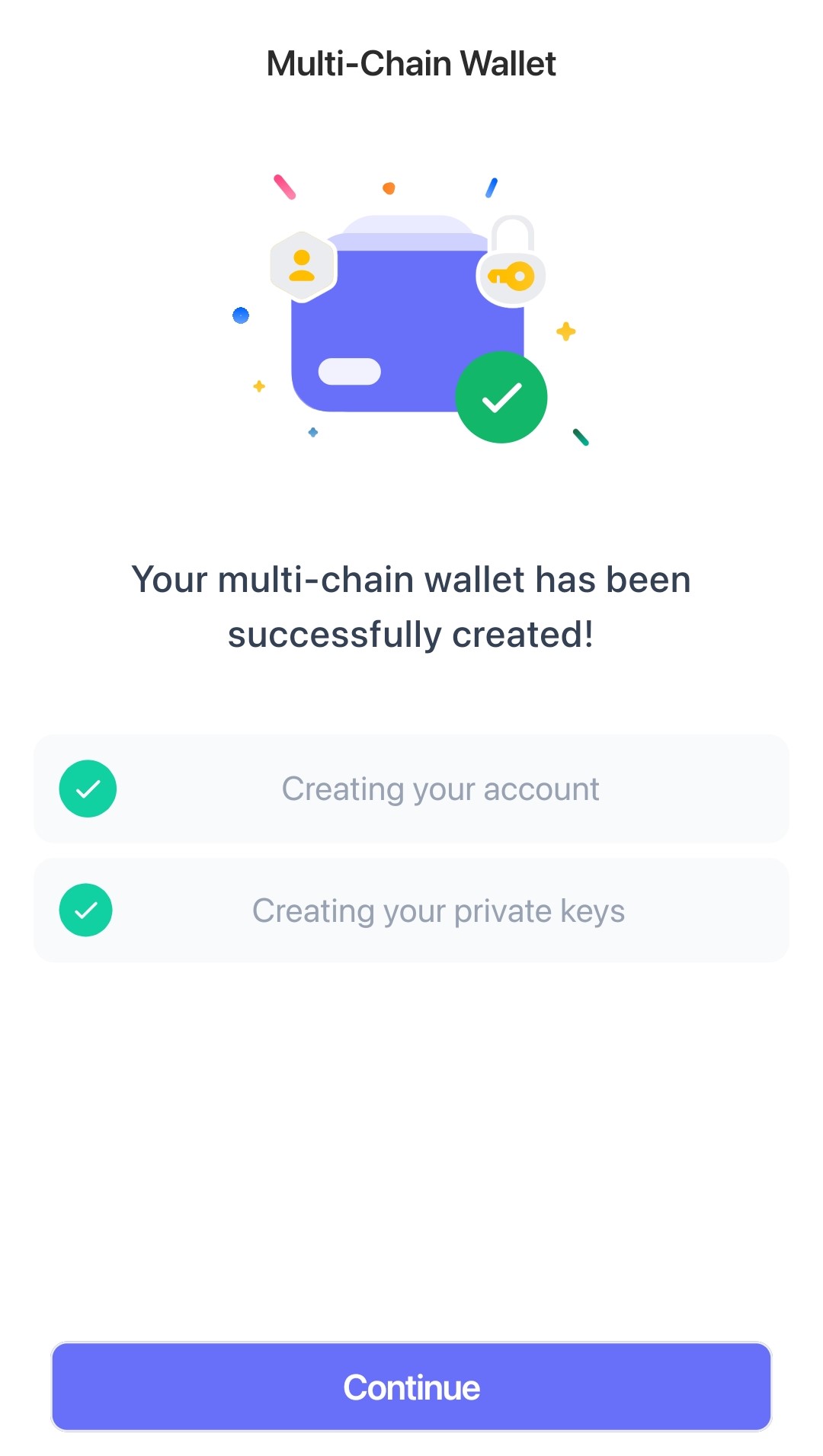
To add another wallet, follow these steps:
1. In the ‘Home’ section, your existing wallet appears top right. Swipe it right and select ‘Add Wallet’.

2. Use your recovery phrase to import your EVM-compatible wallet.
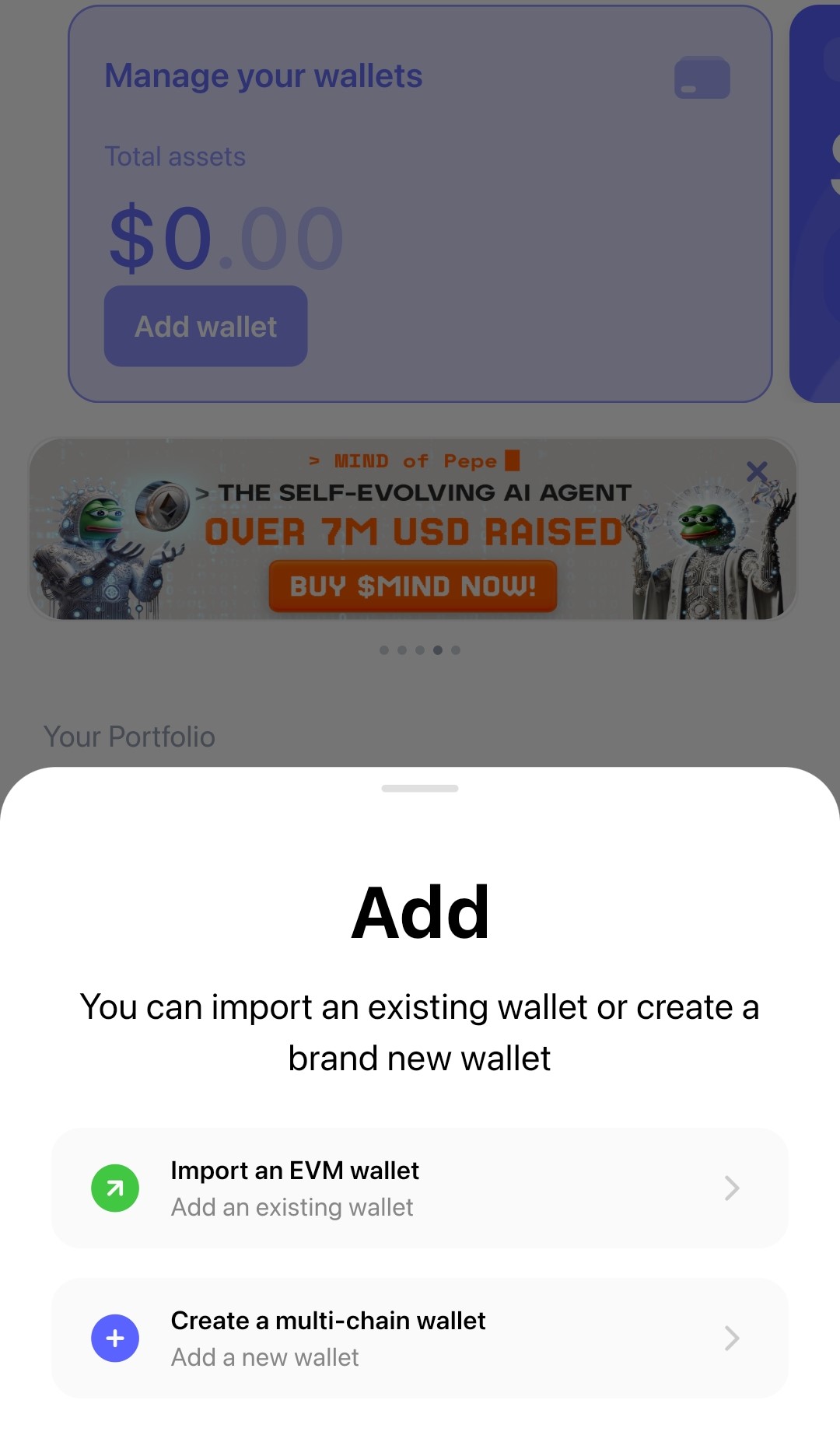
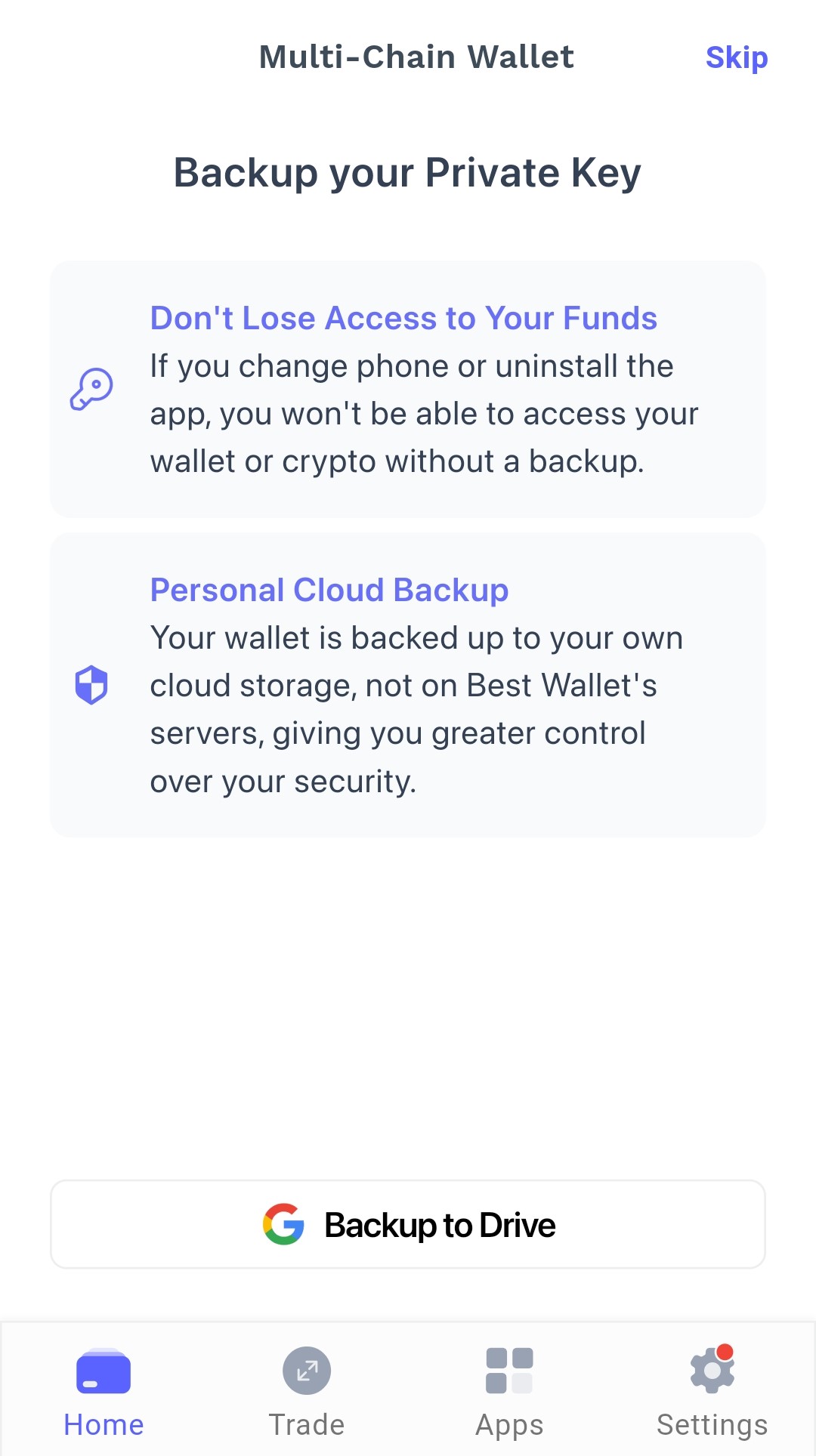
3. Name your wallet, pick a theme, and you’re all set.
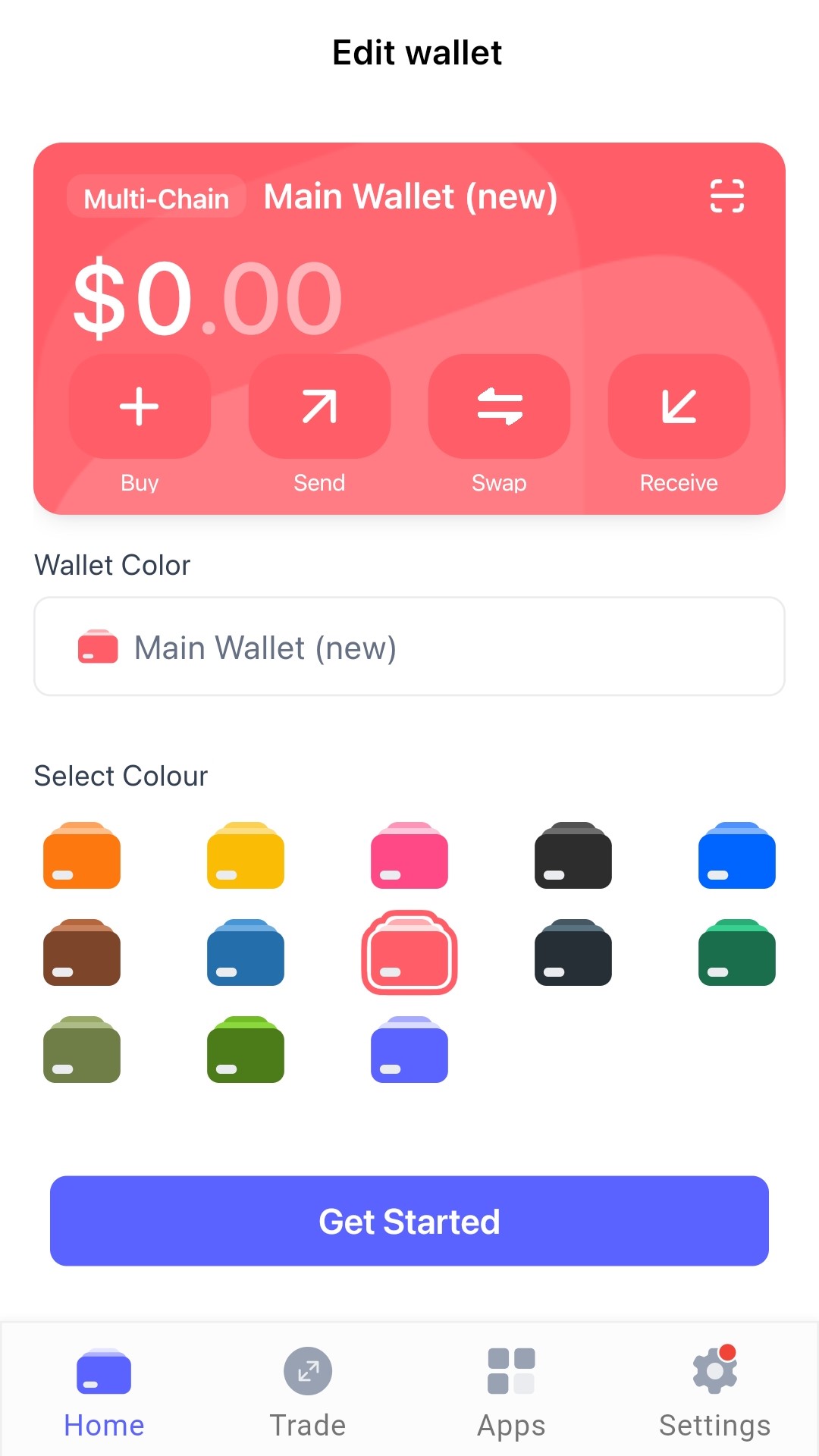
Bitbox Wallet Review – Conclusion
BitBox wallet promises a safe haven for your crypto keys with its Swiss technology. Its dual chip security is generally safe and trusted by many. However, it’s not entirely air-gapped and requires dedicated software to operate. Its features are also somewhat limited, despite its broad crypto support range.
If you want quicker access to your assets, on-the-go trading, and more features like dApps, all completely free, we recommend Best Wallet. The wallet is not only instant and profitable, but it’s also among the safest Web3 wallets out there. The choice is yours.

